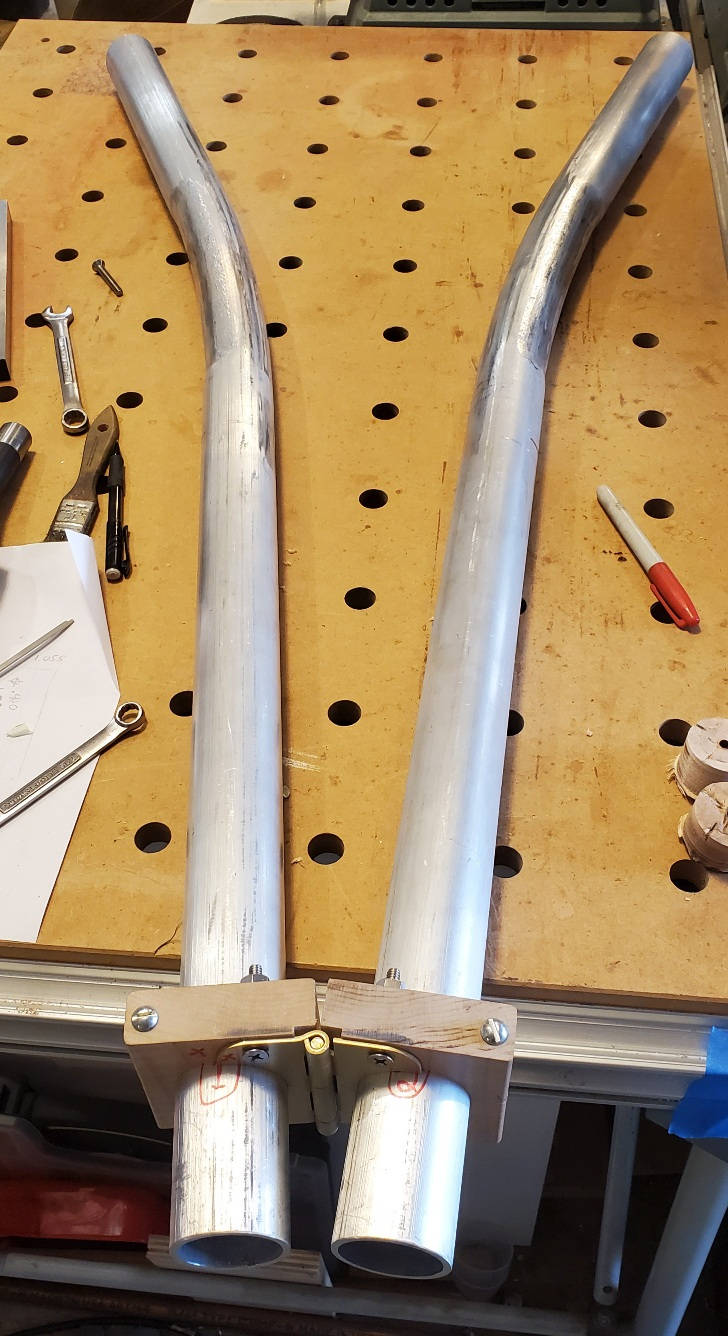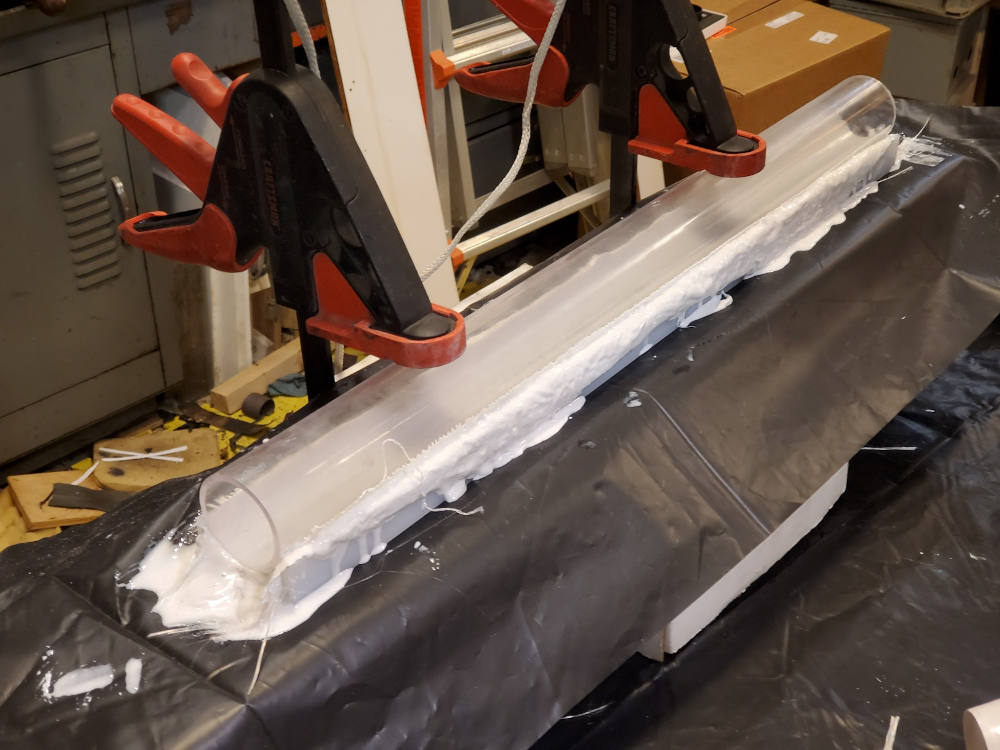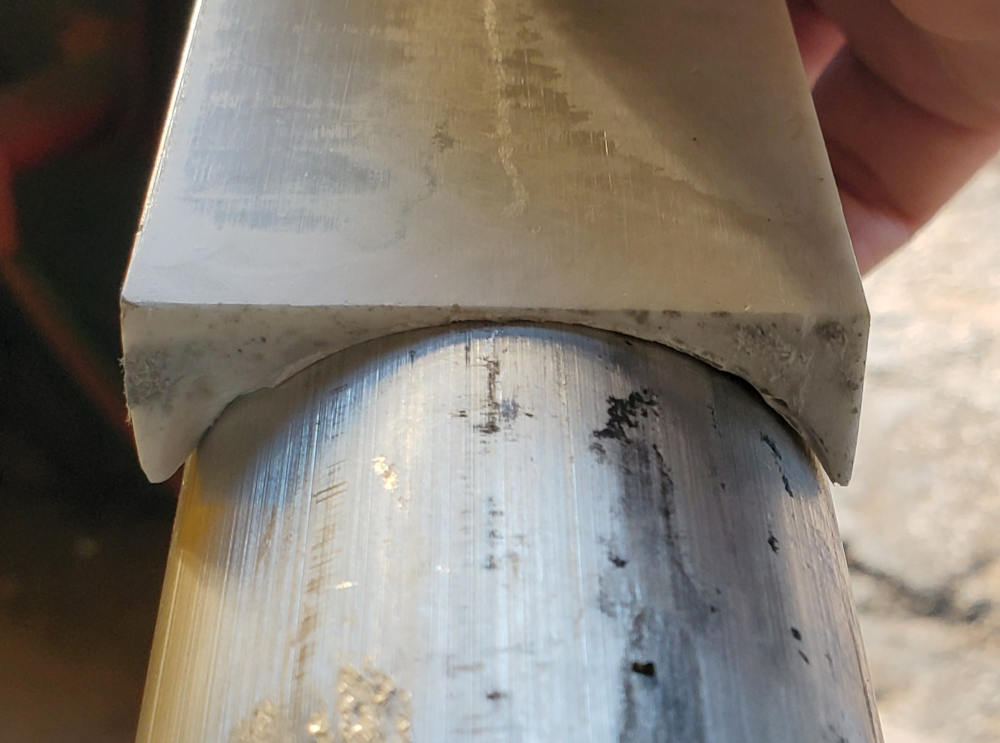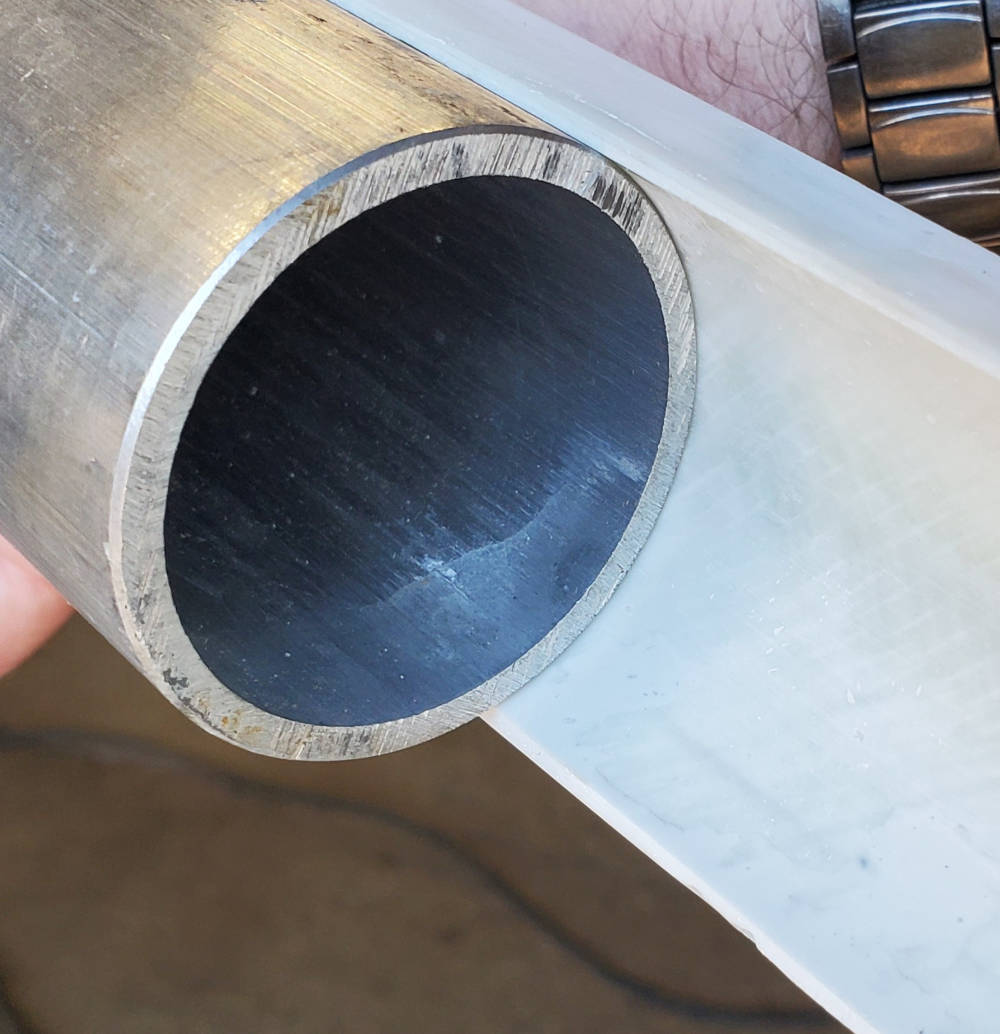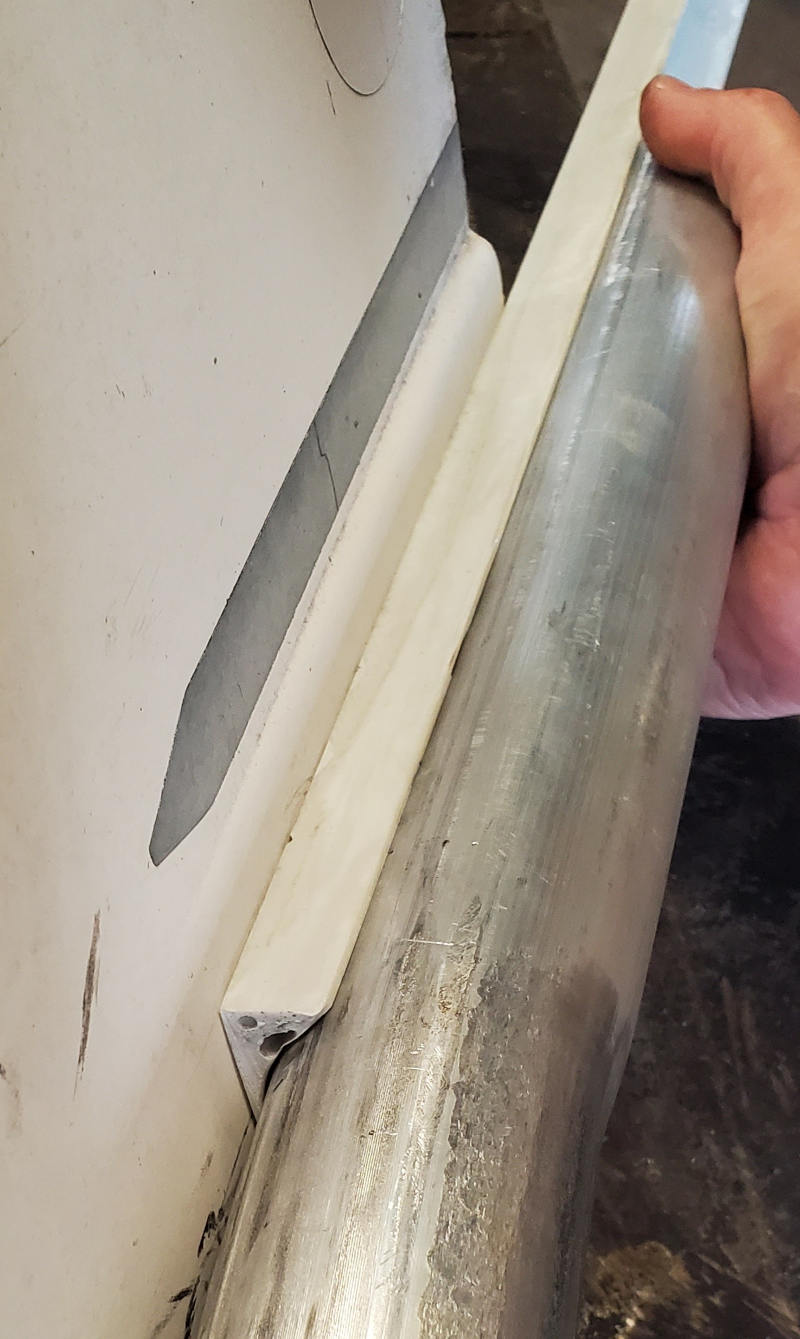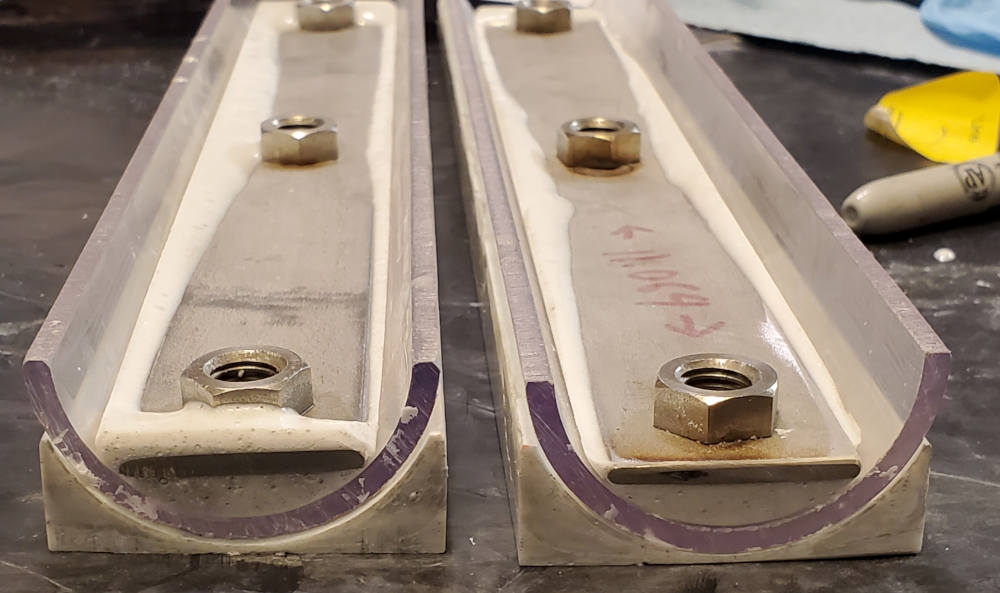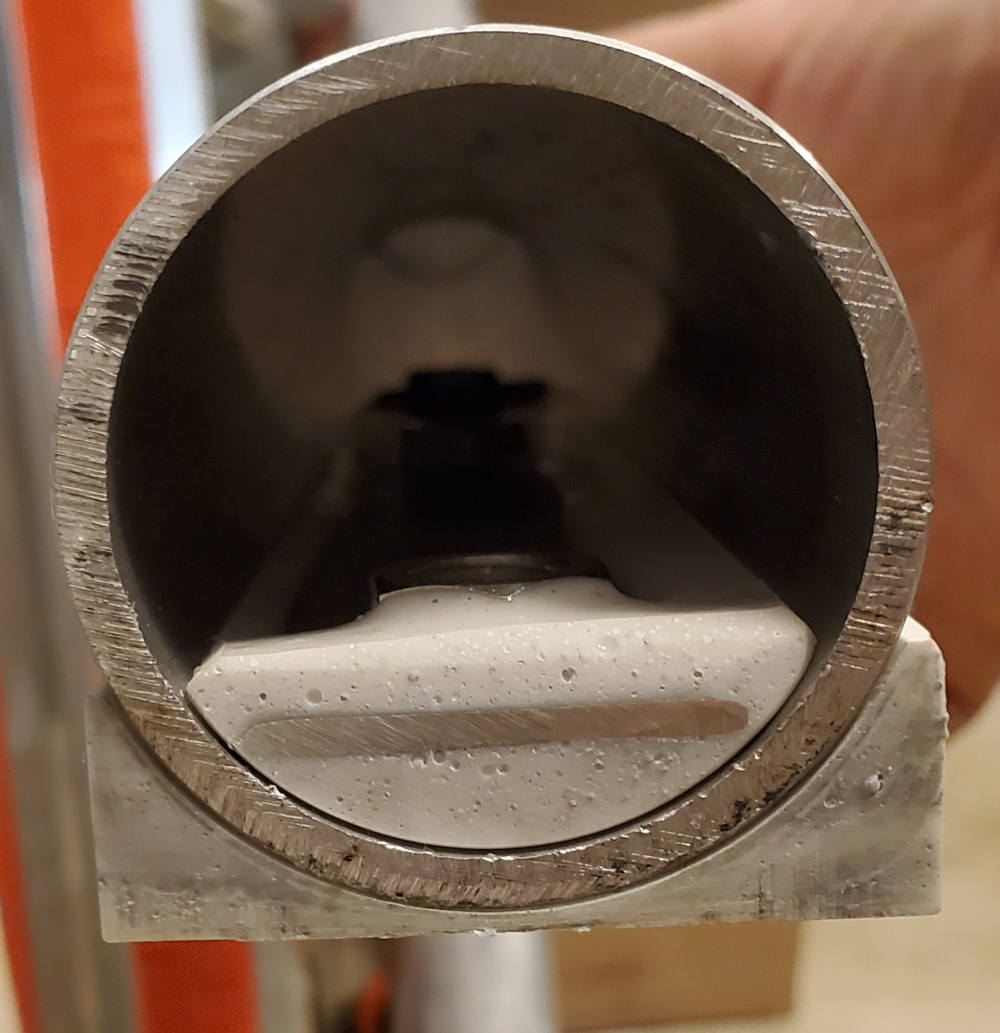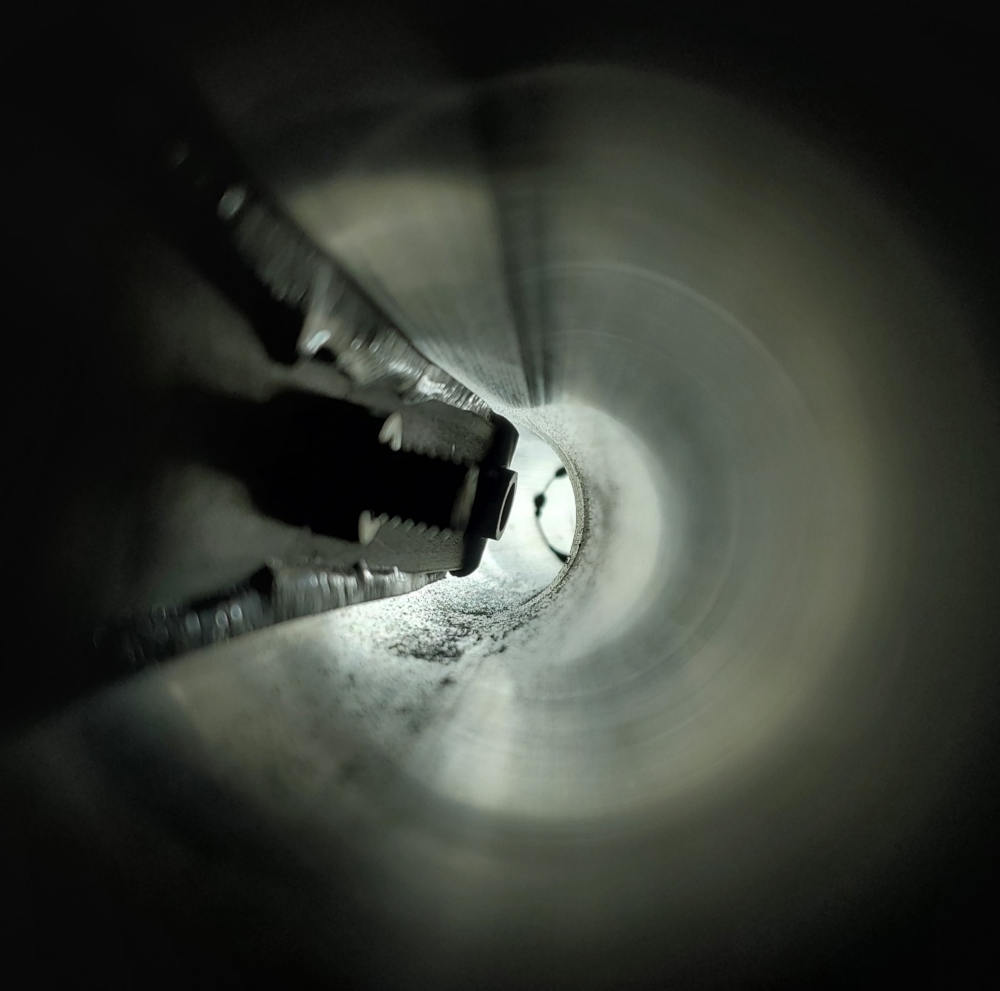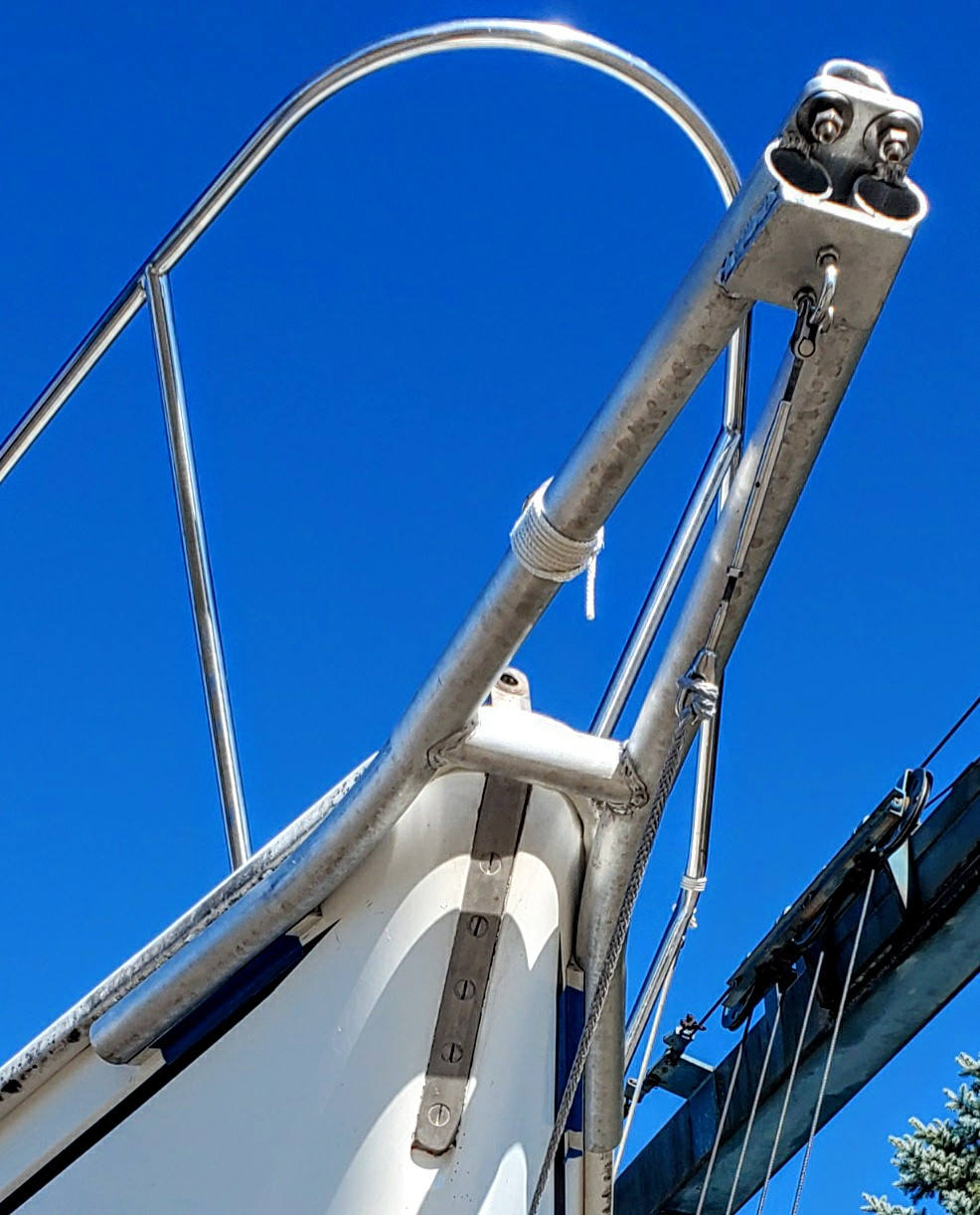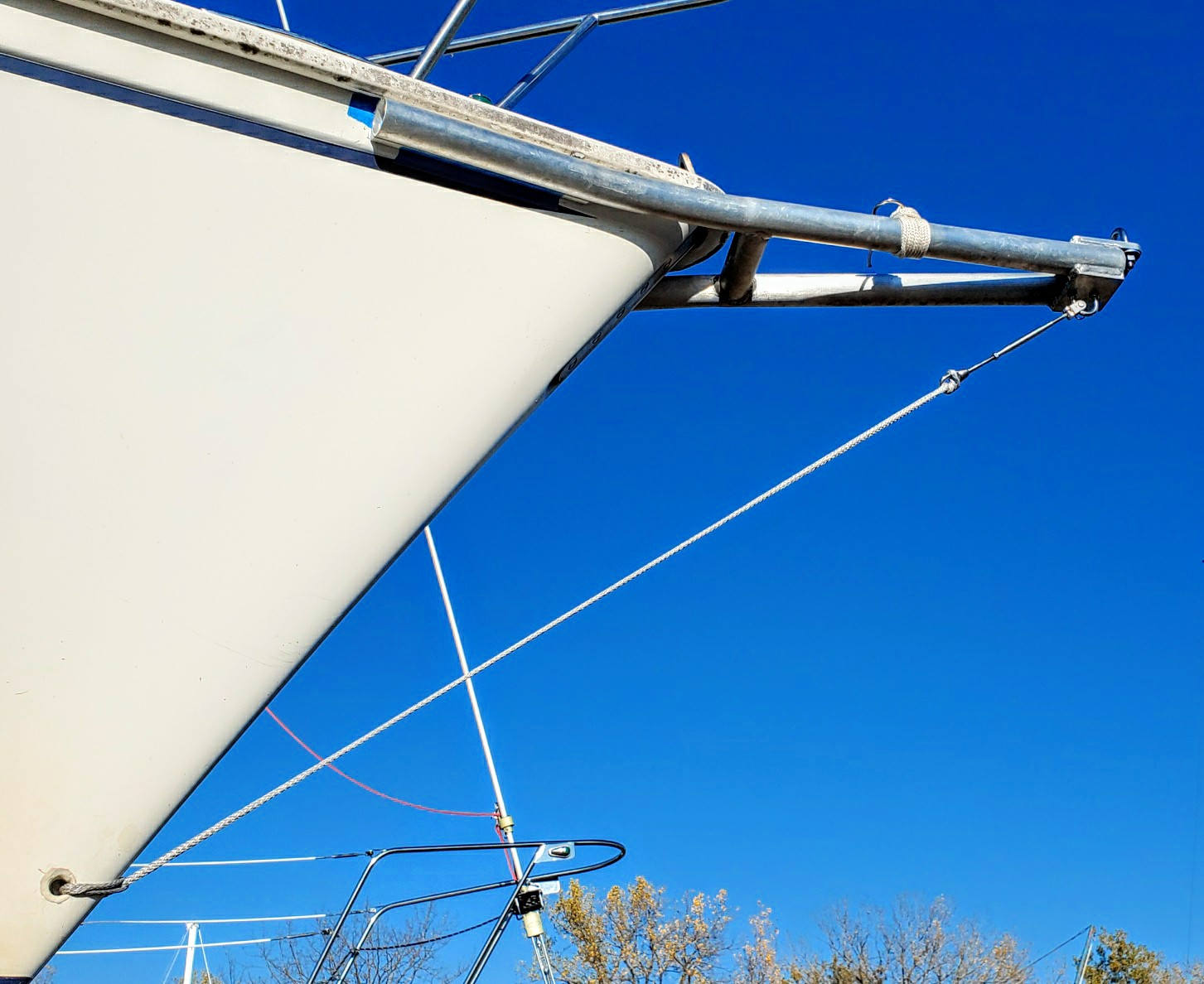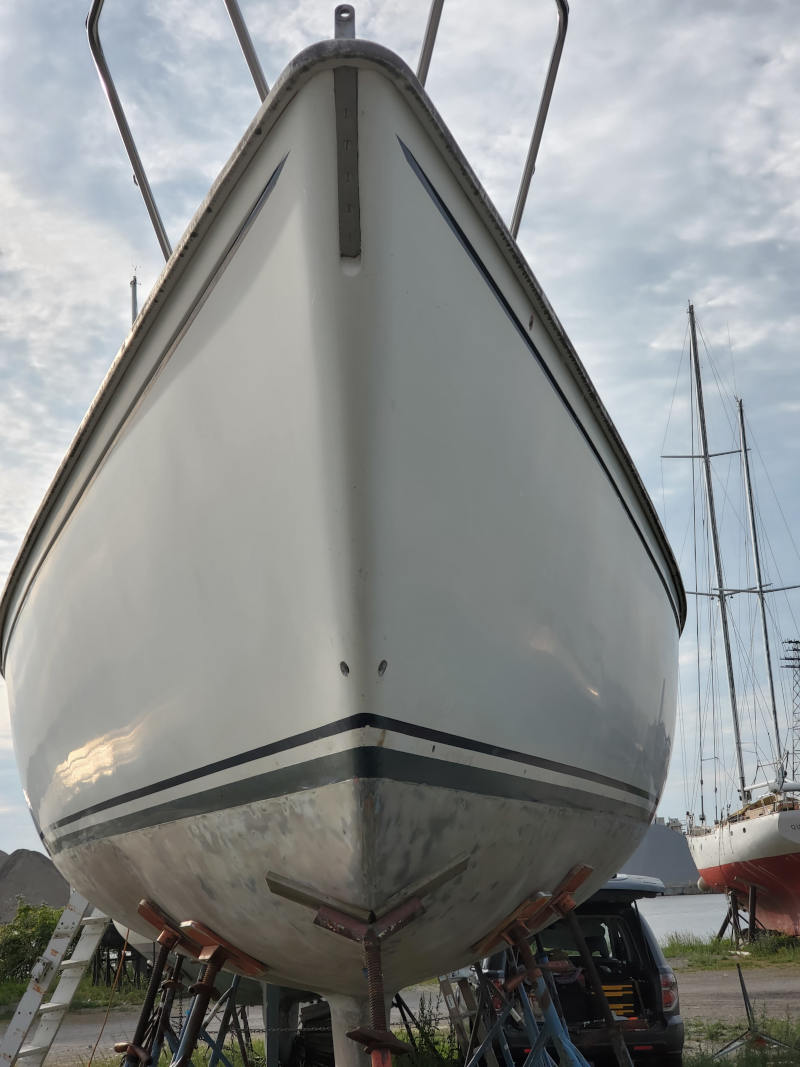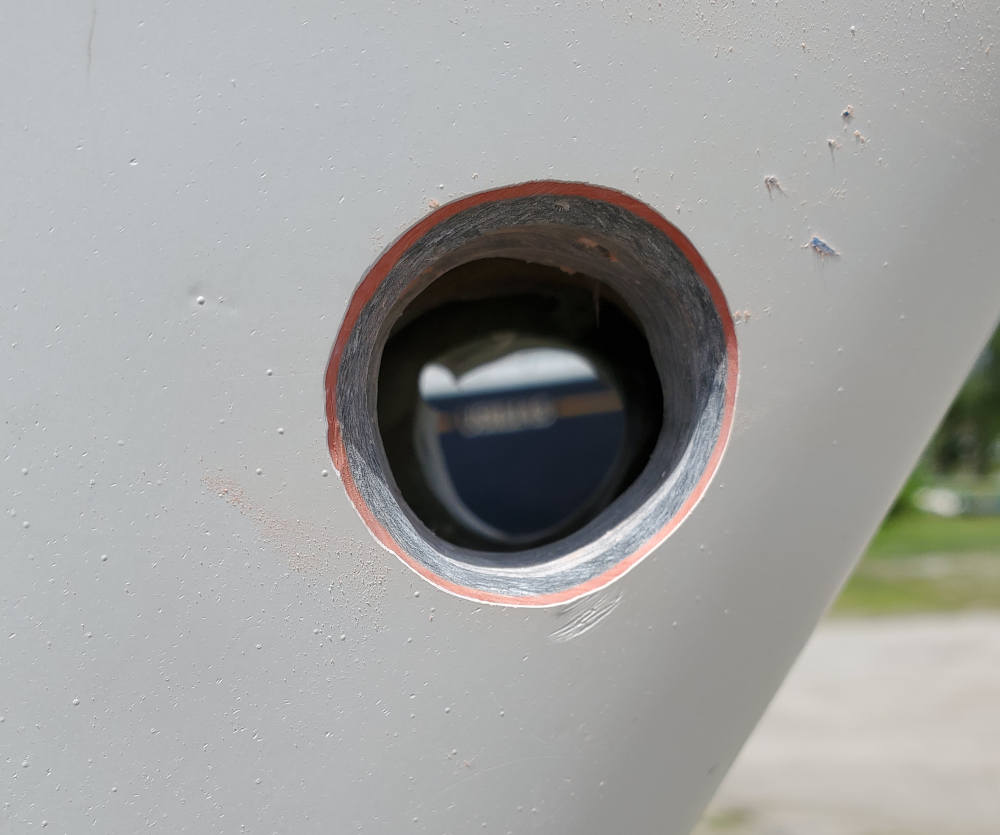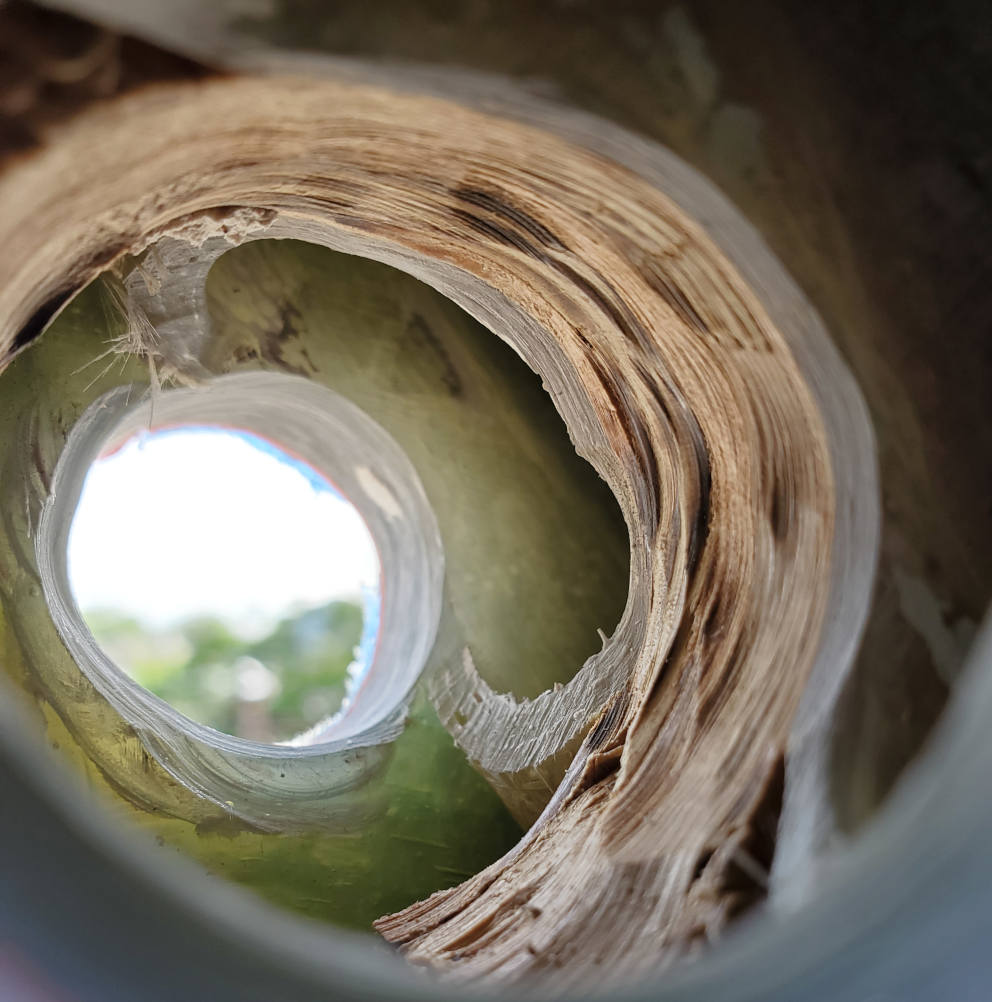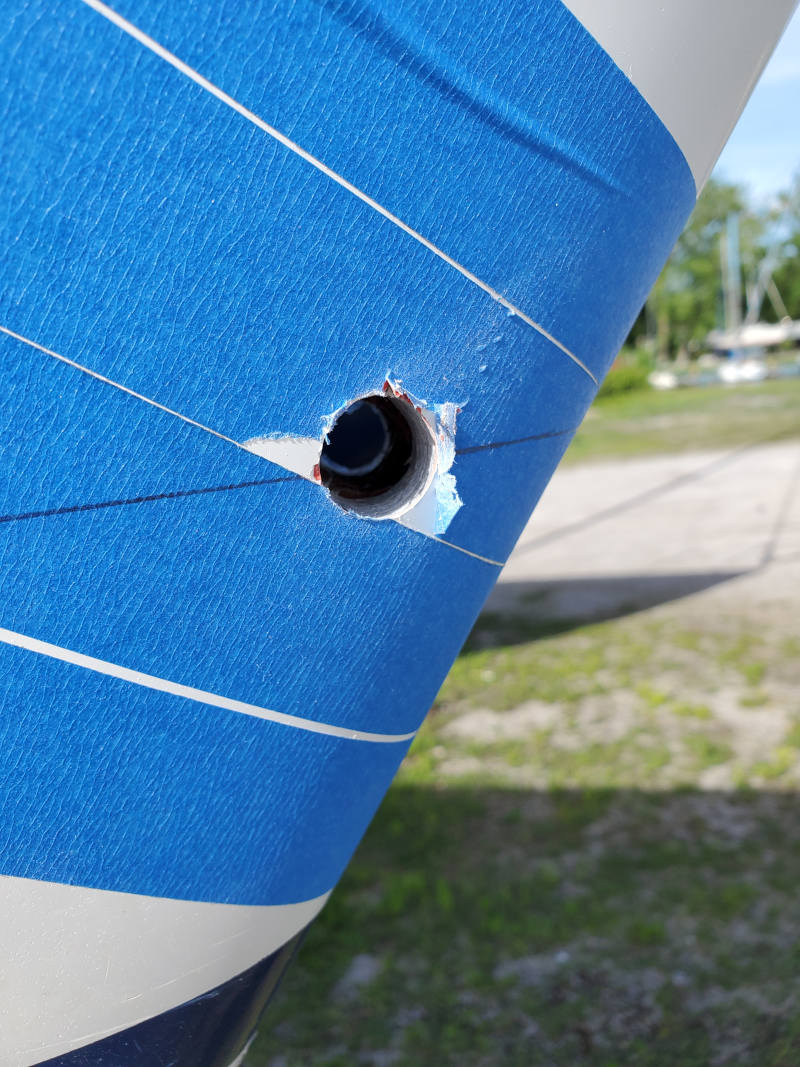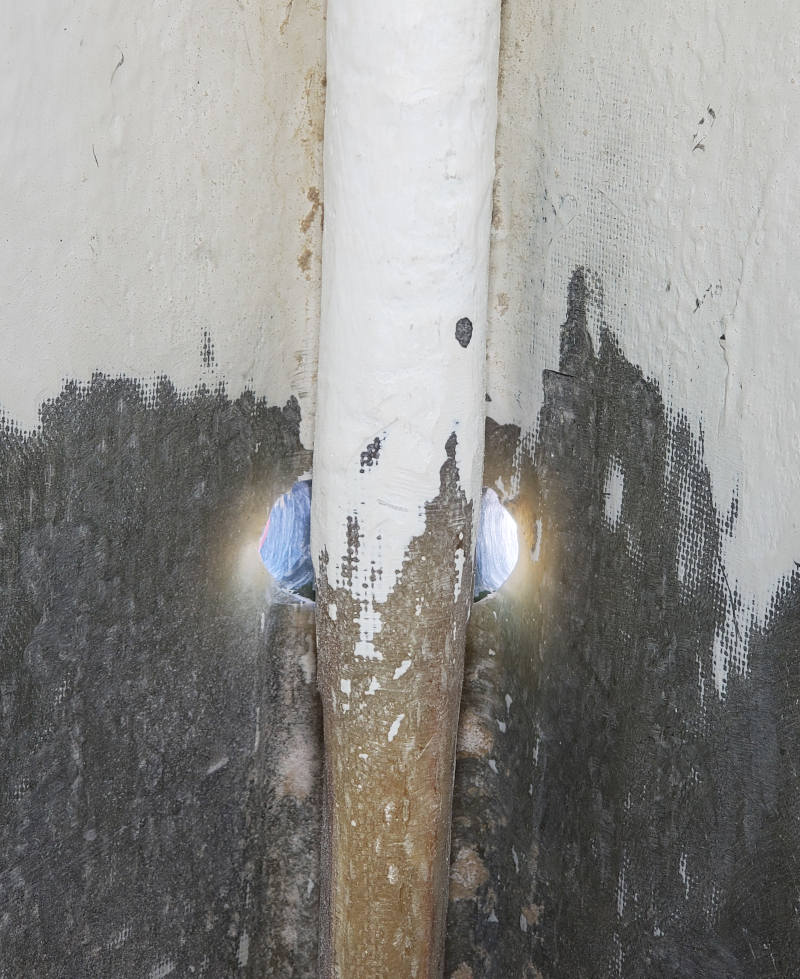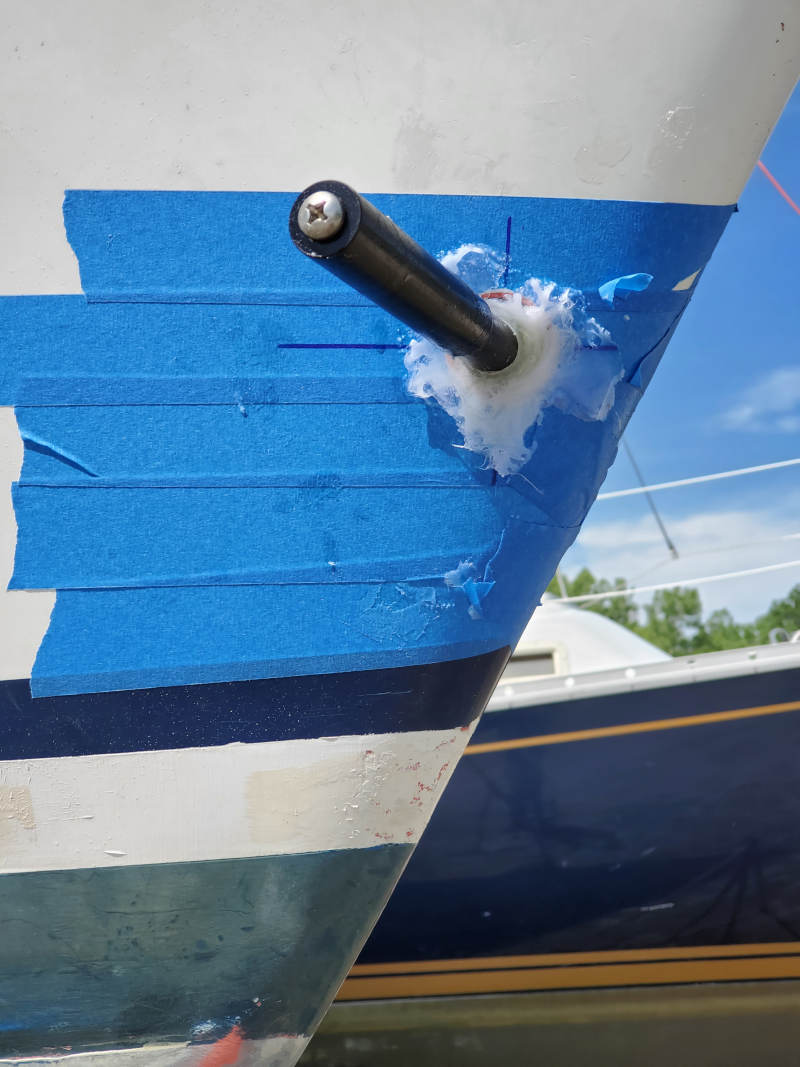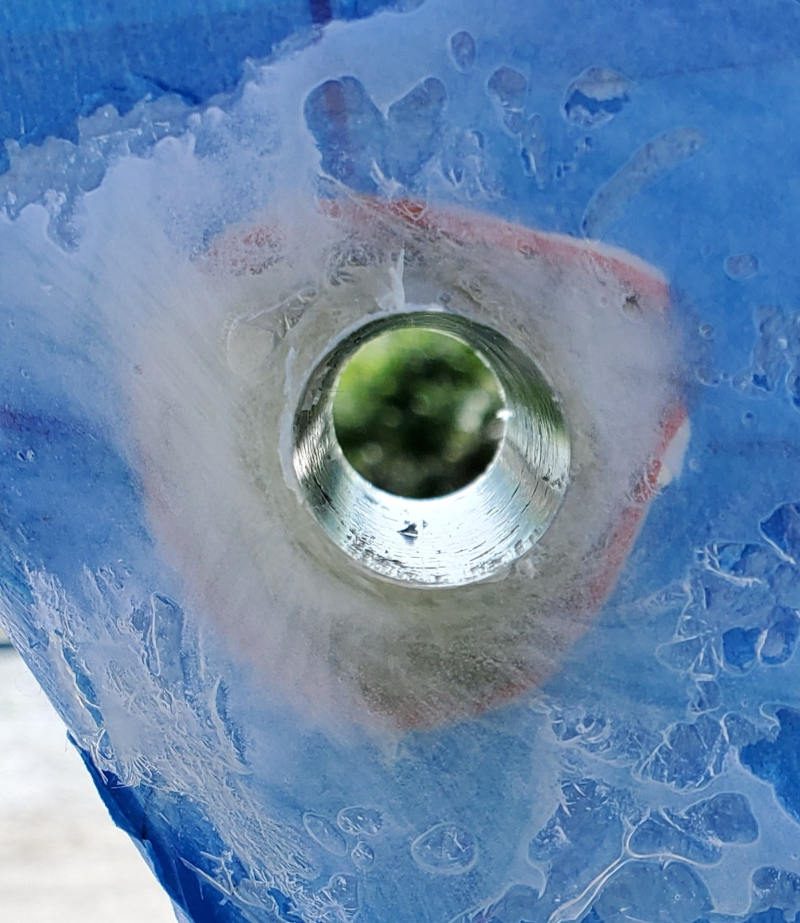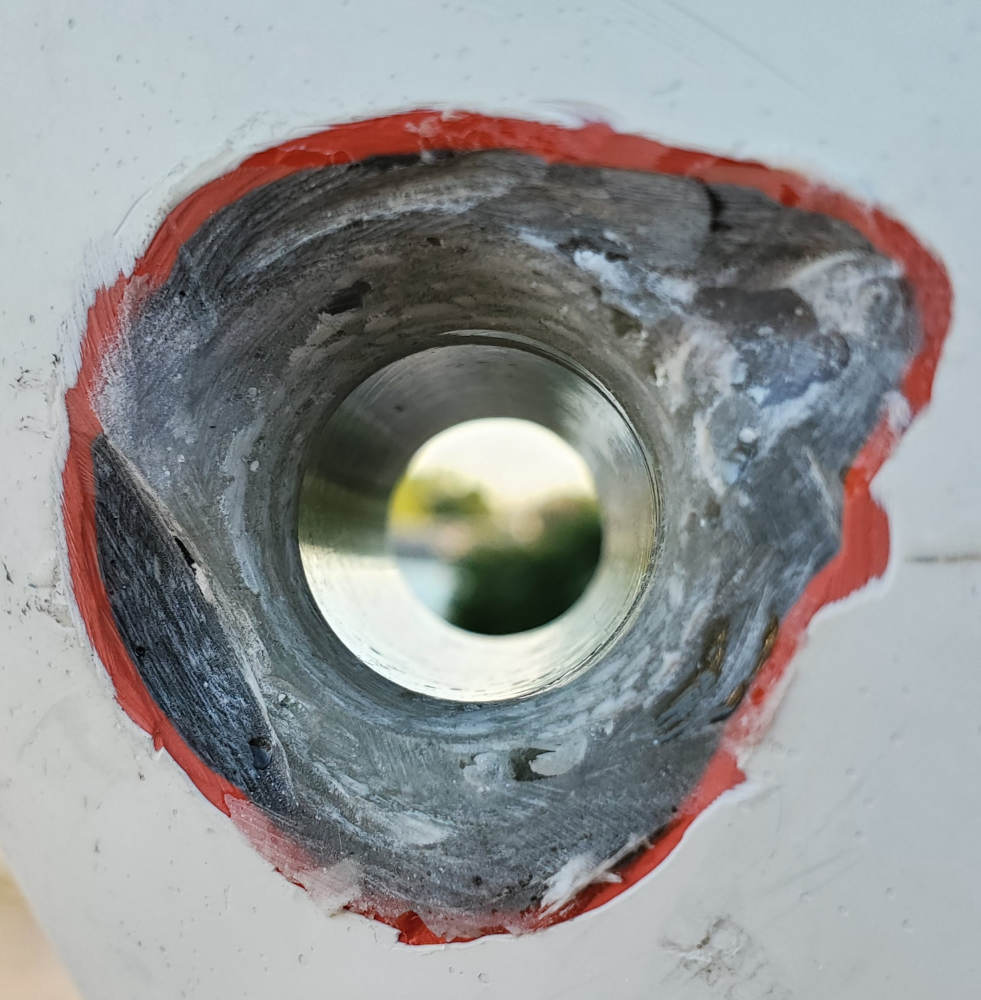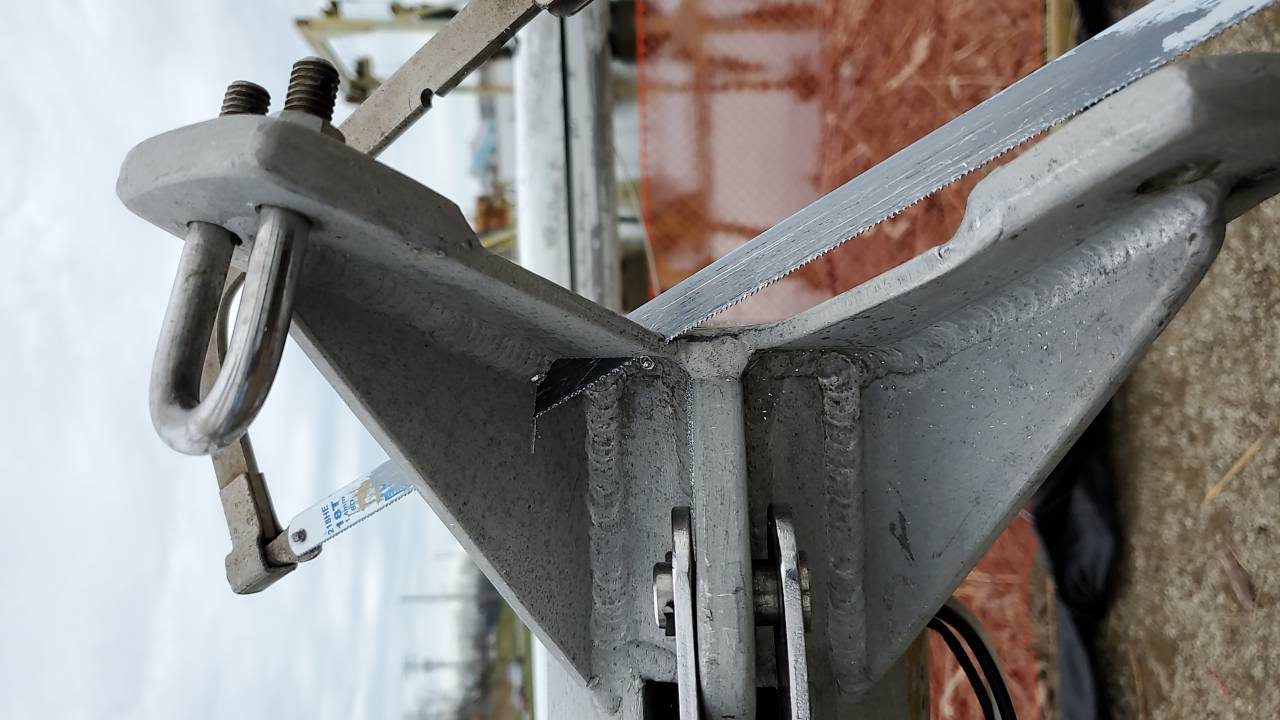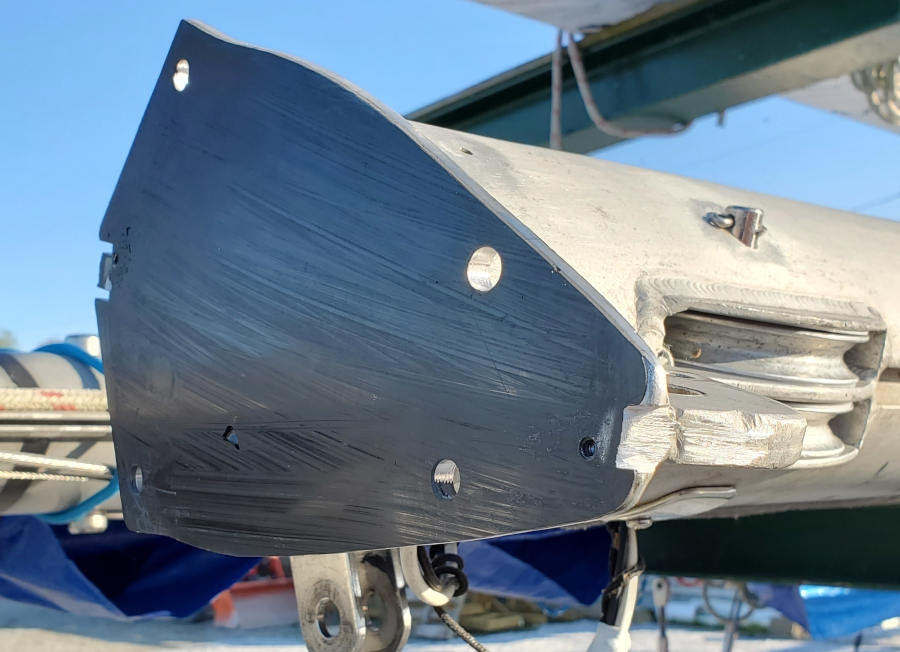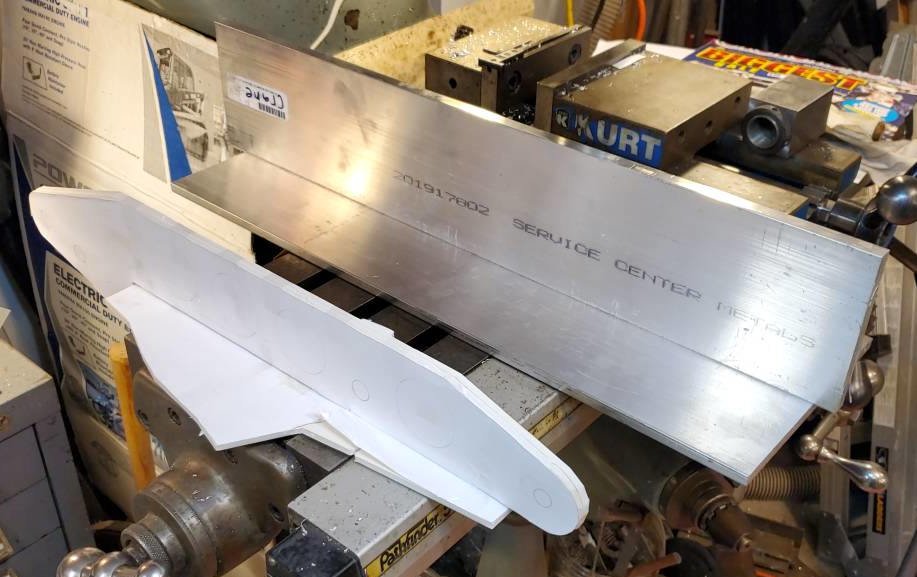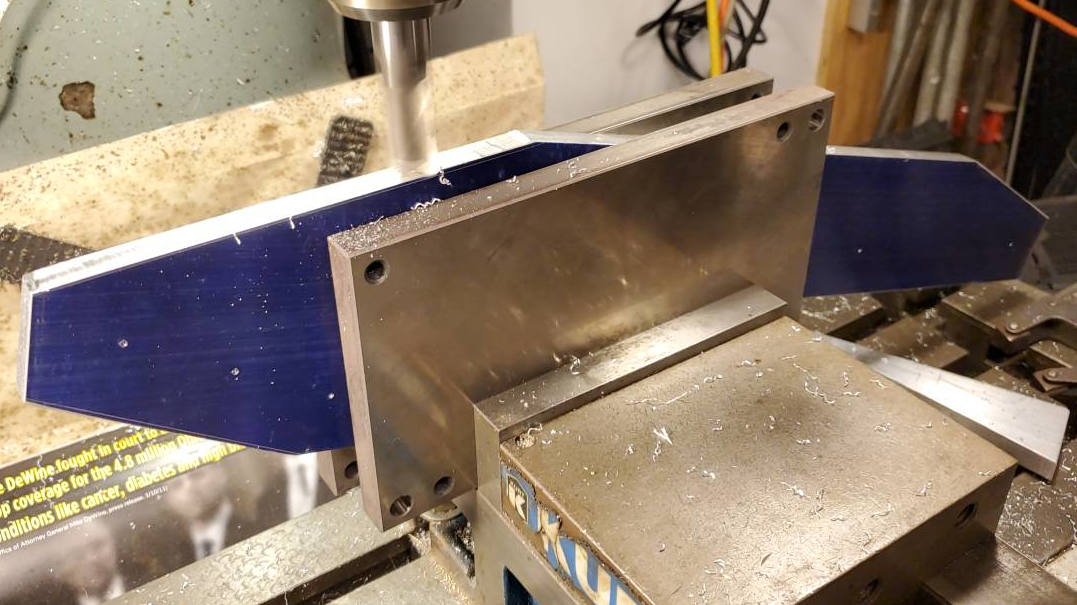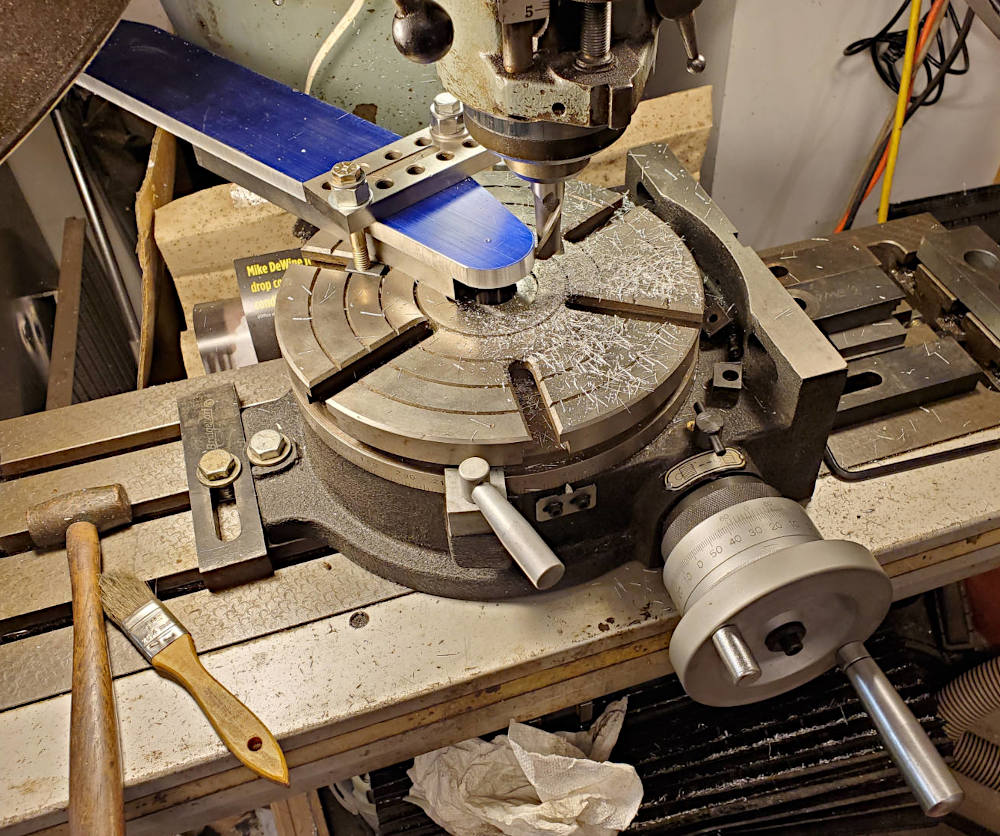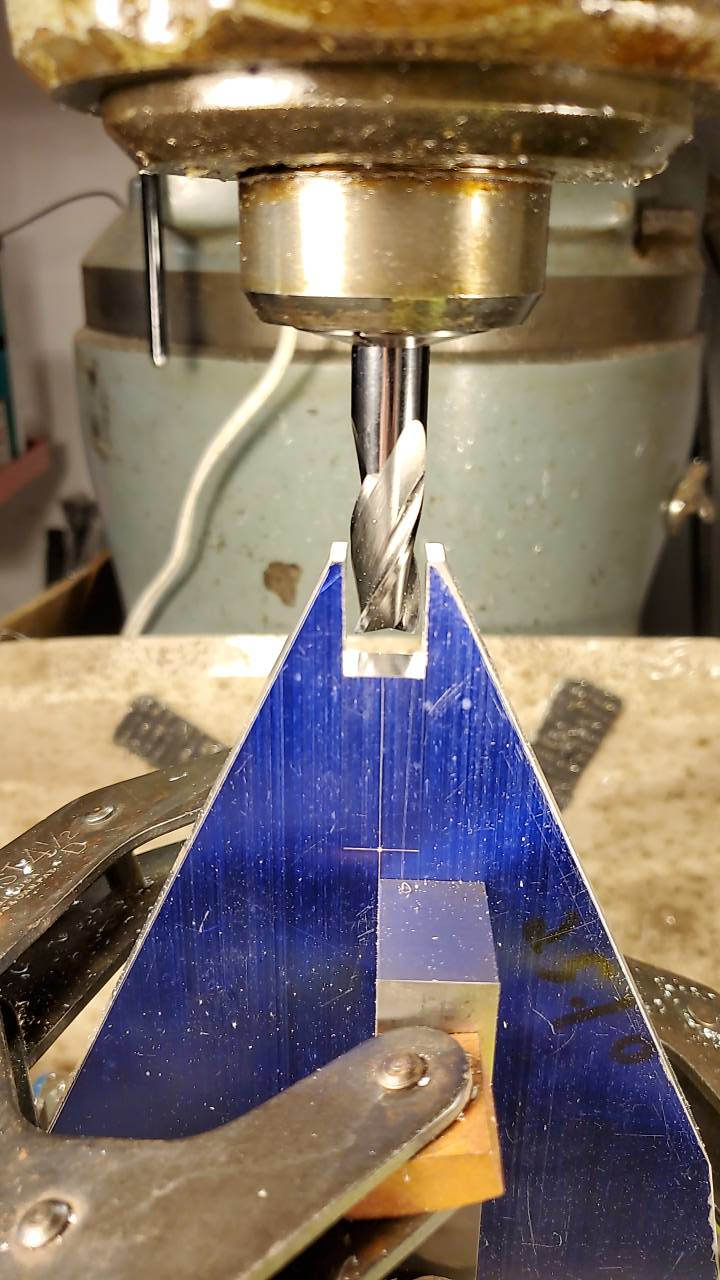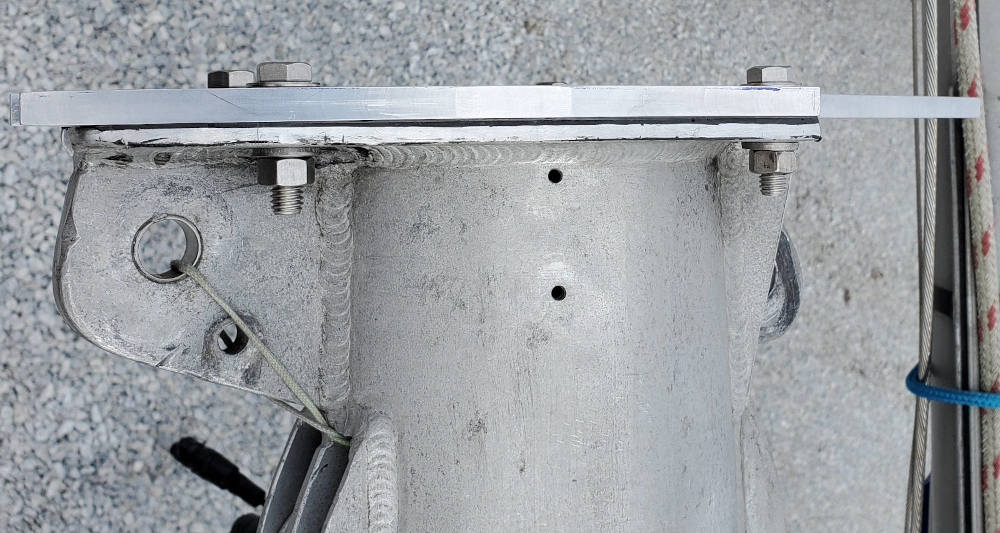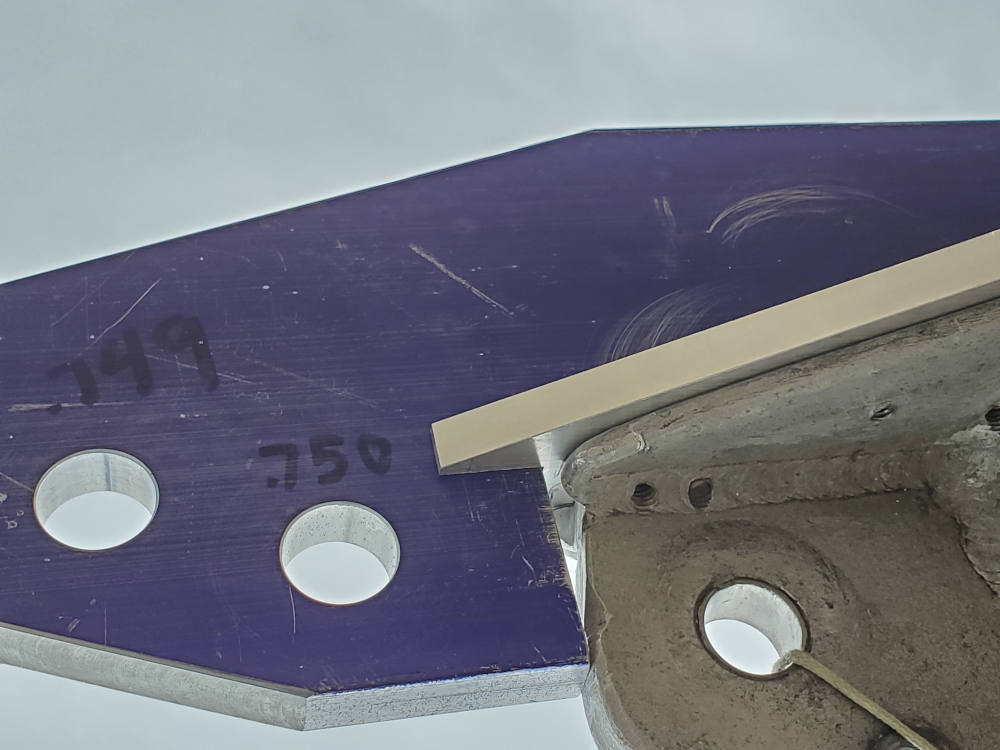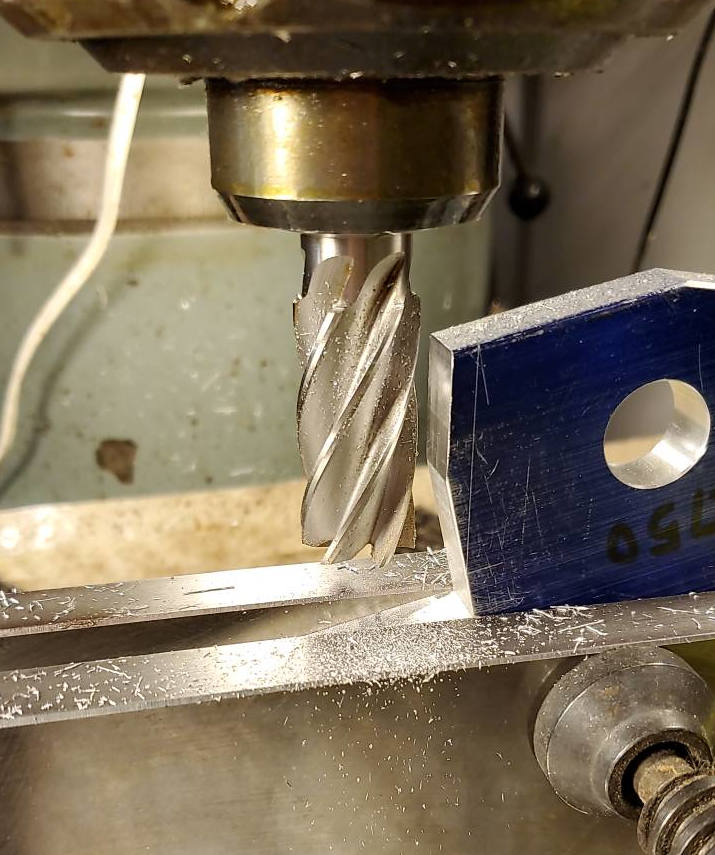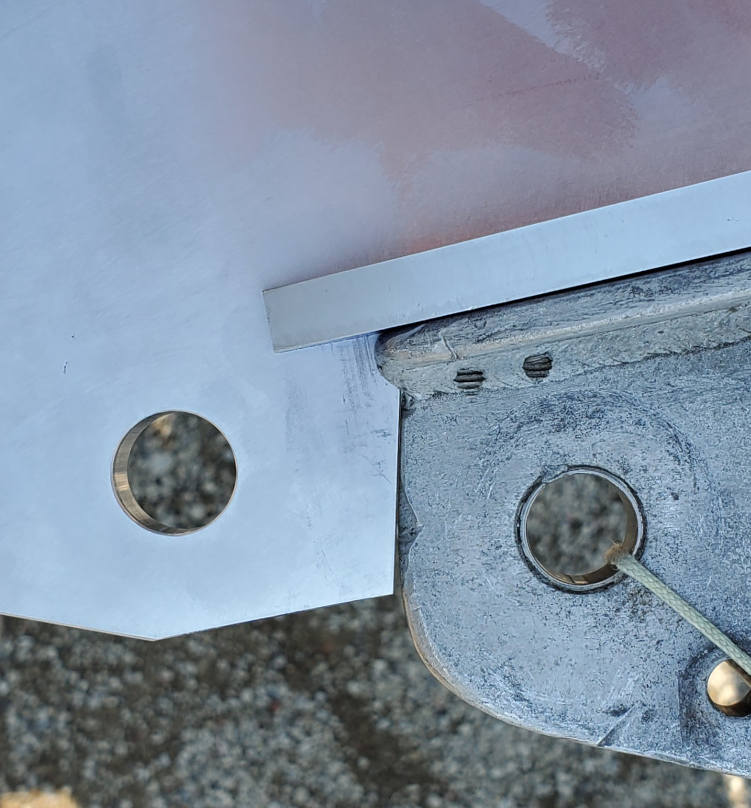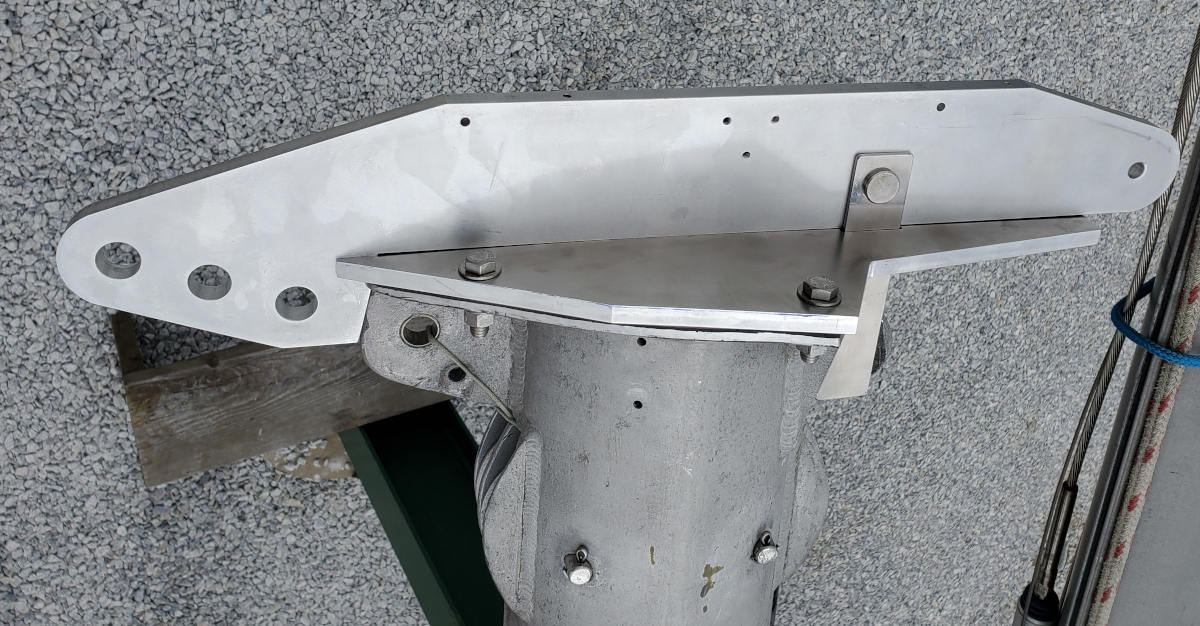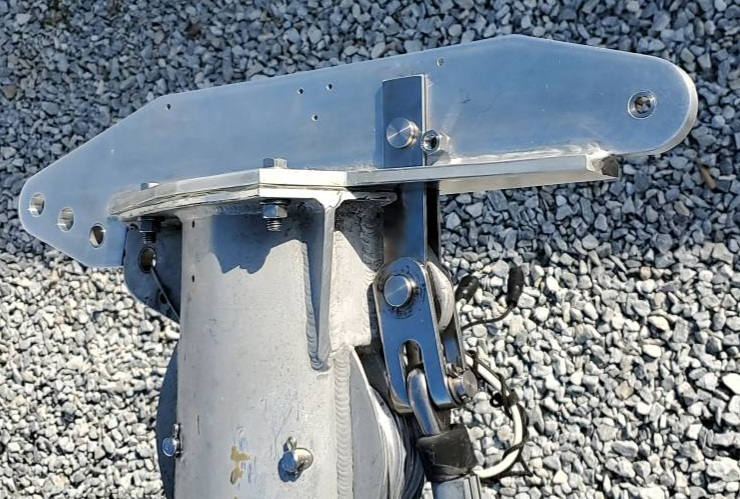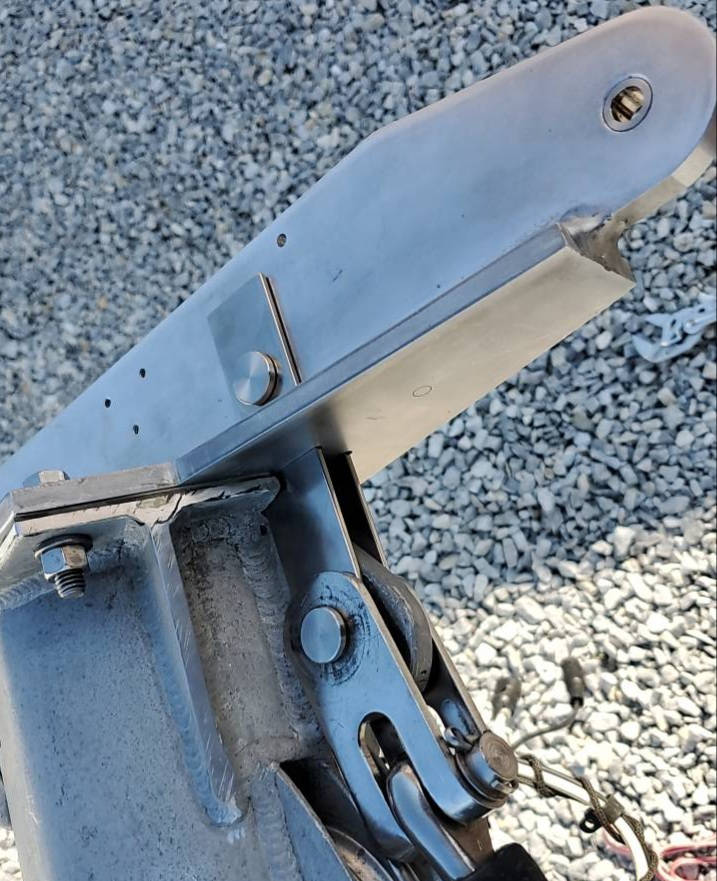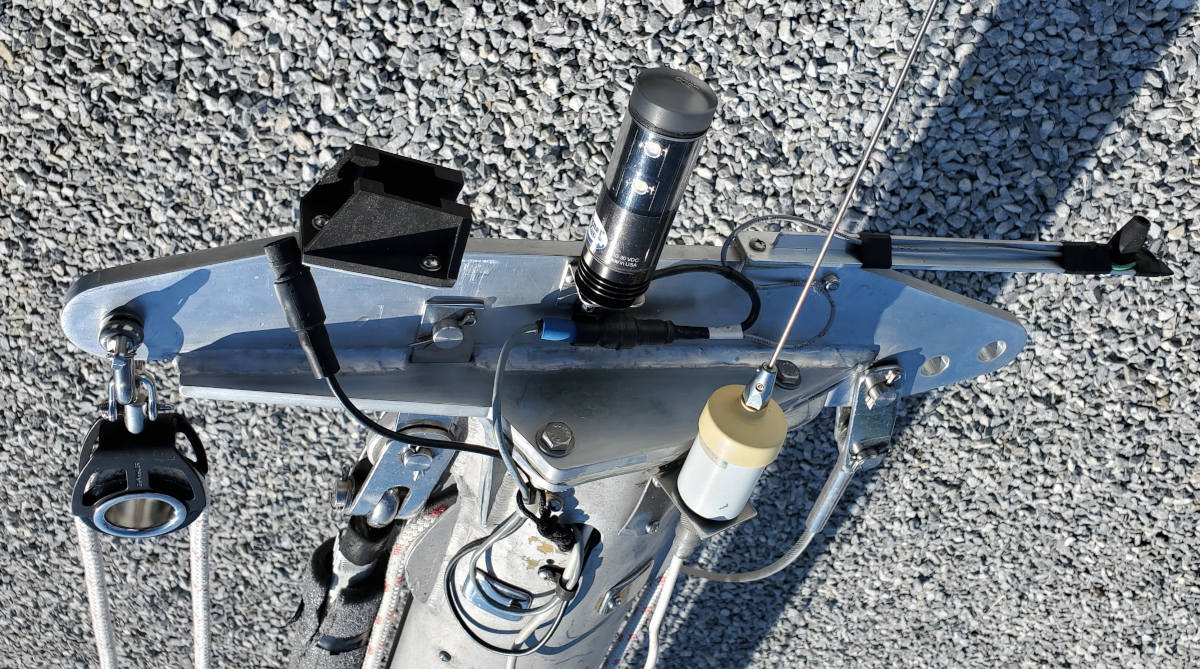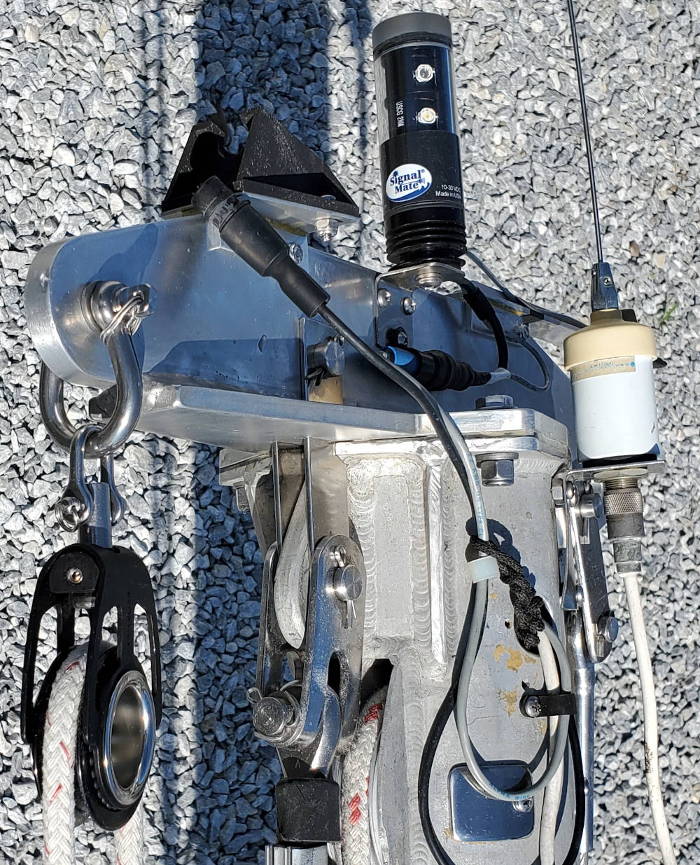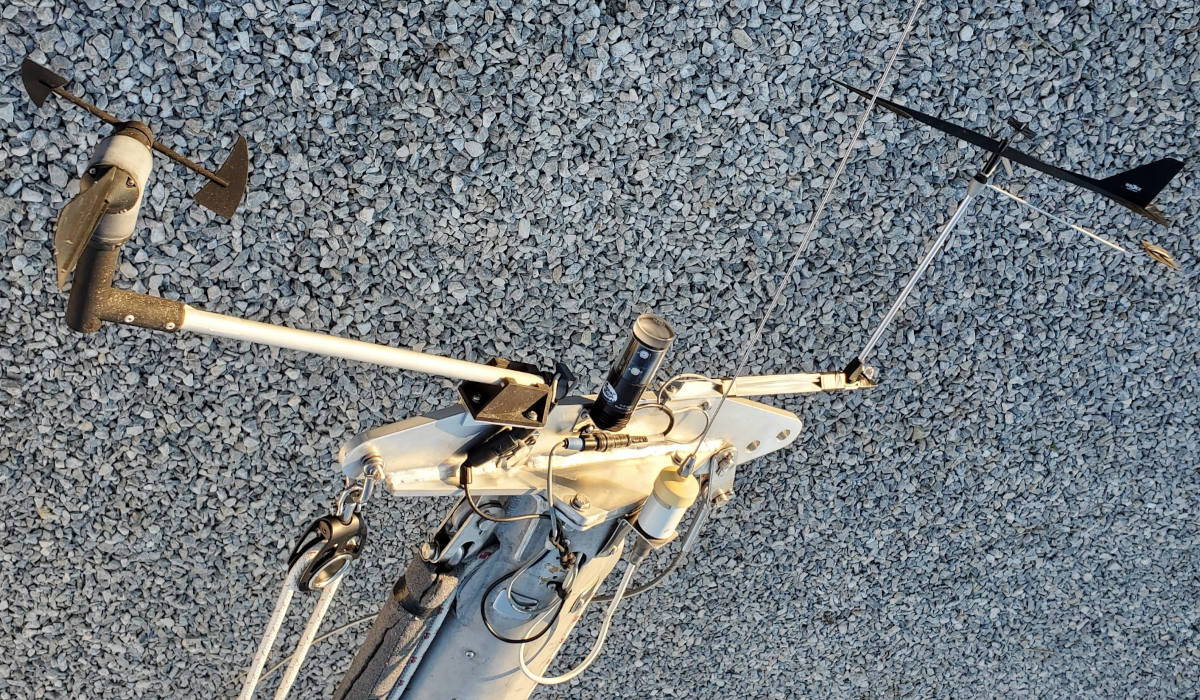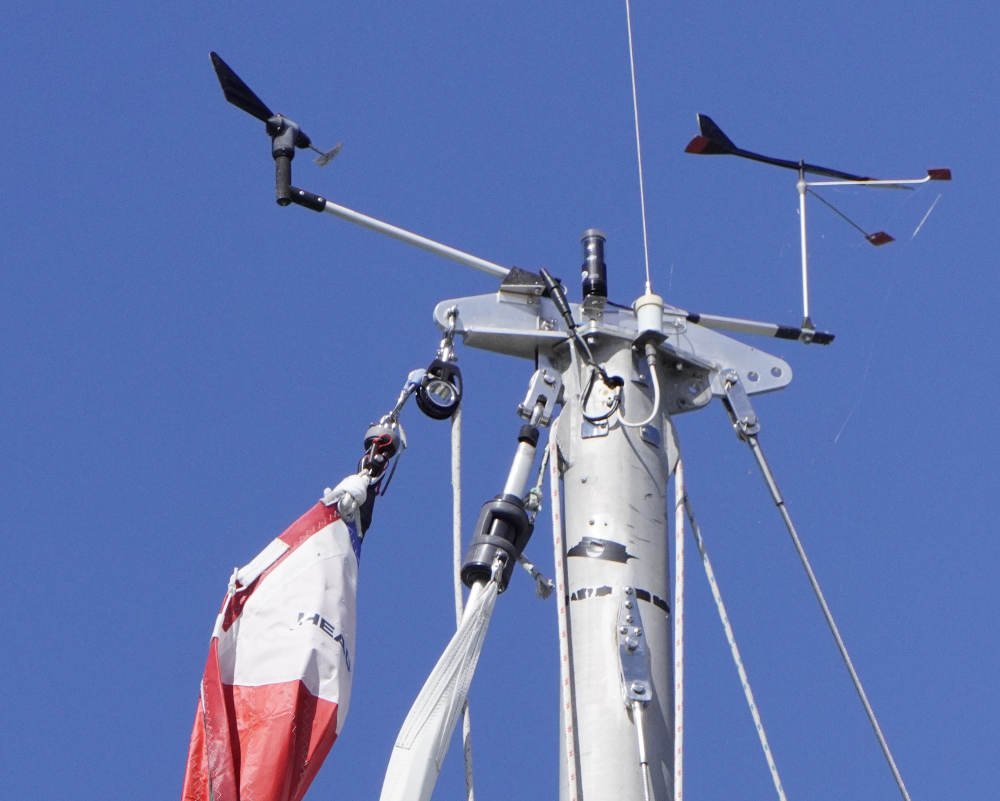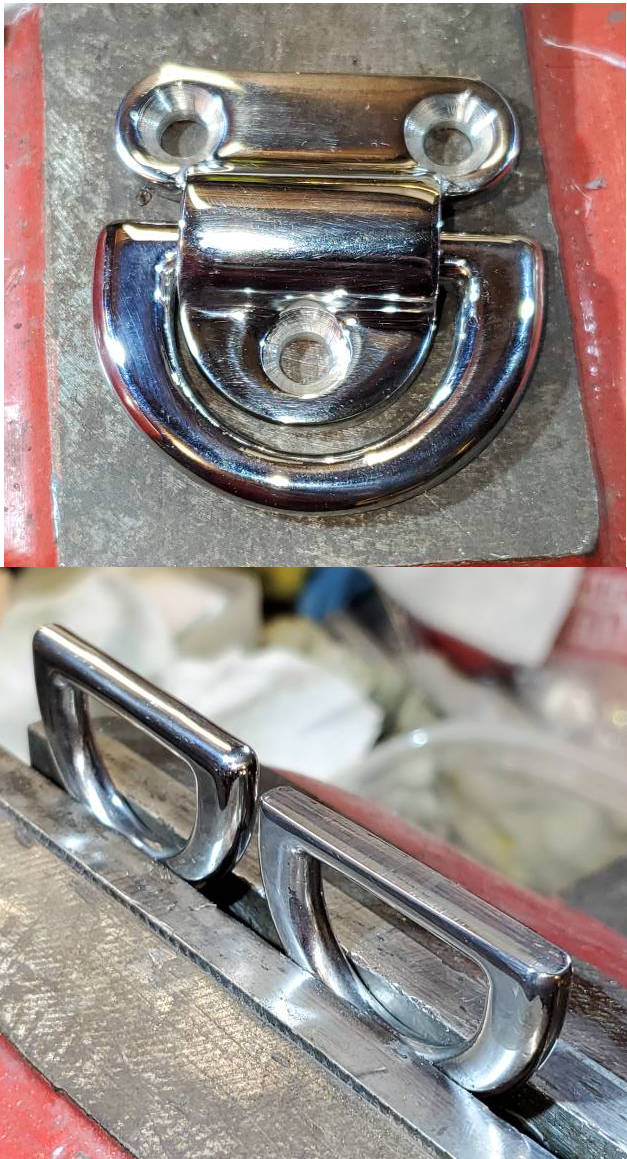

| Pearson 10M Top Down Furling Asymmetric Spinnaker |
|
For the 2020 season I added a top-down furling asymmetric spinnaker. This set up hoists on a line called a torsion line with a swivel at the top and a drum at the bottom. The torsion line can coil up but it resists twisting like a rope would. The torsion line behaves like the foil on a regular headsail furling which allows the spinnaker to be rolled up around it. The sail is hoisted furled and then unrolled. You roll it back up and drop it furled. It jibes like a standard asymmetric but its often easier to roll it up, jibe, and roll it back out on the other side. The furling line is a continuous loop and you need to keep some tension on the lazy side to keep the line engaged in the drum as the sail is furled. This can be a challange short handed as you also need to keep some tension on the sheet.
The sail is attached to the furler system but it could be detached and flown in a conventional manner or used with a sock. There is no adaptation to the sail for the furler beyond lashing it to the drum and swivel. The drum and swivel can be disconnected from the torsion line so you can have multiple sails with their own torsion lines that uses the same drum and swivel. The furling system needs a bit of clearance from the furled headsail and for the swivels at the top and bottom. I made some modifications to accommodate all that. I made a new masthead crane fitting that gets the spinnaker halyard block out 6" in front of the headstay to keep the swivel clear and I added a short bowsprit to get the furling drum and and the furled sail out in front of the pulpit and headsail. My sail is a moderate asymetric (aka genanker). |
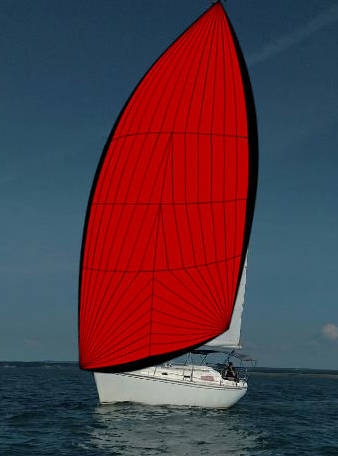 |
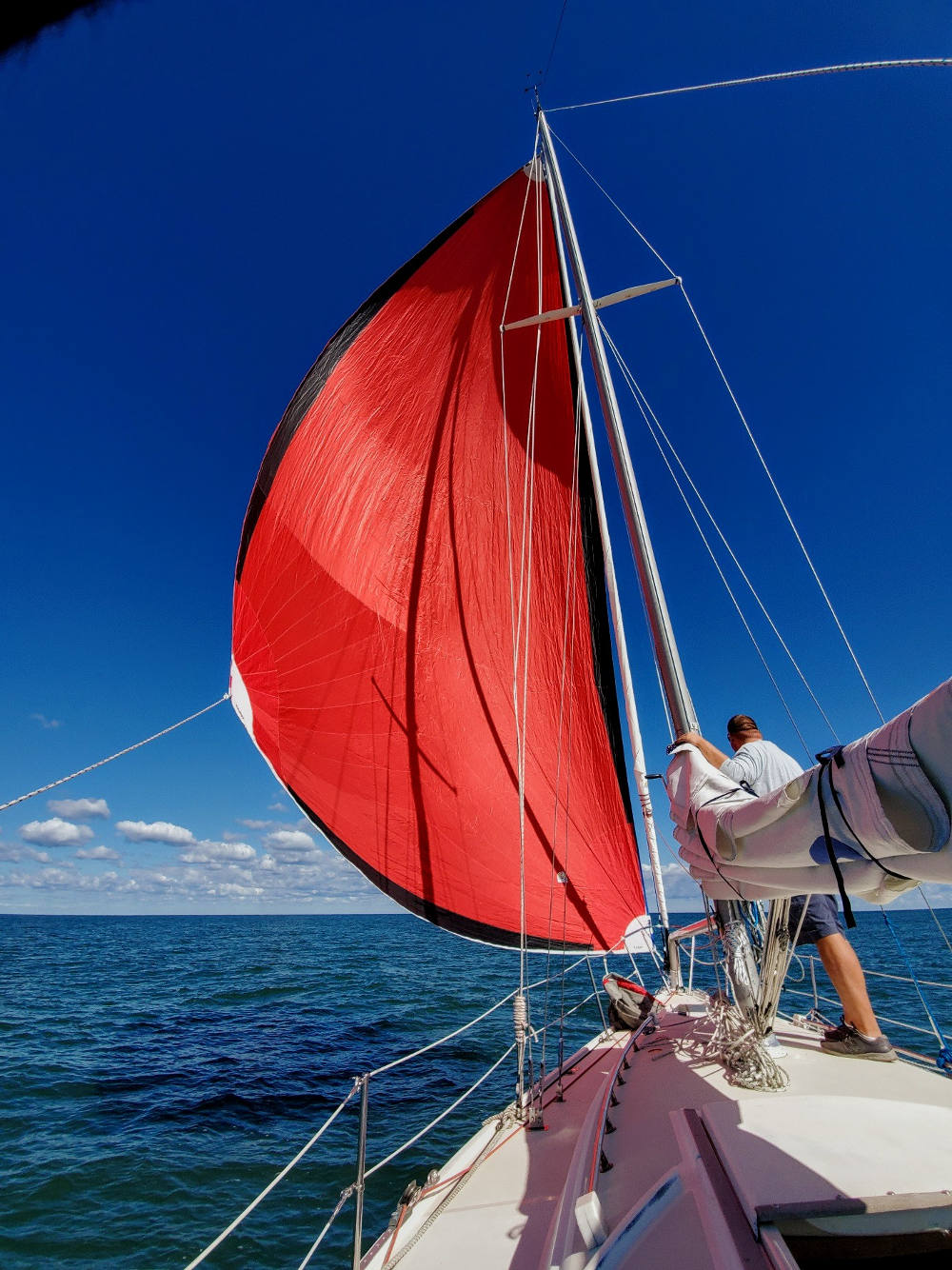 |
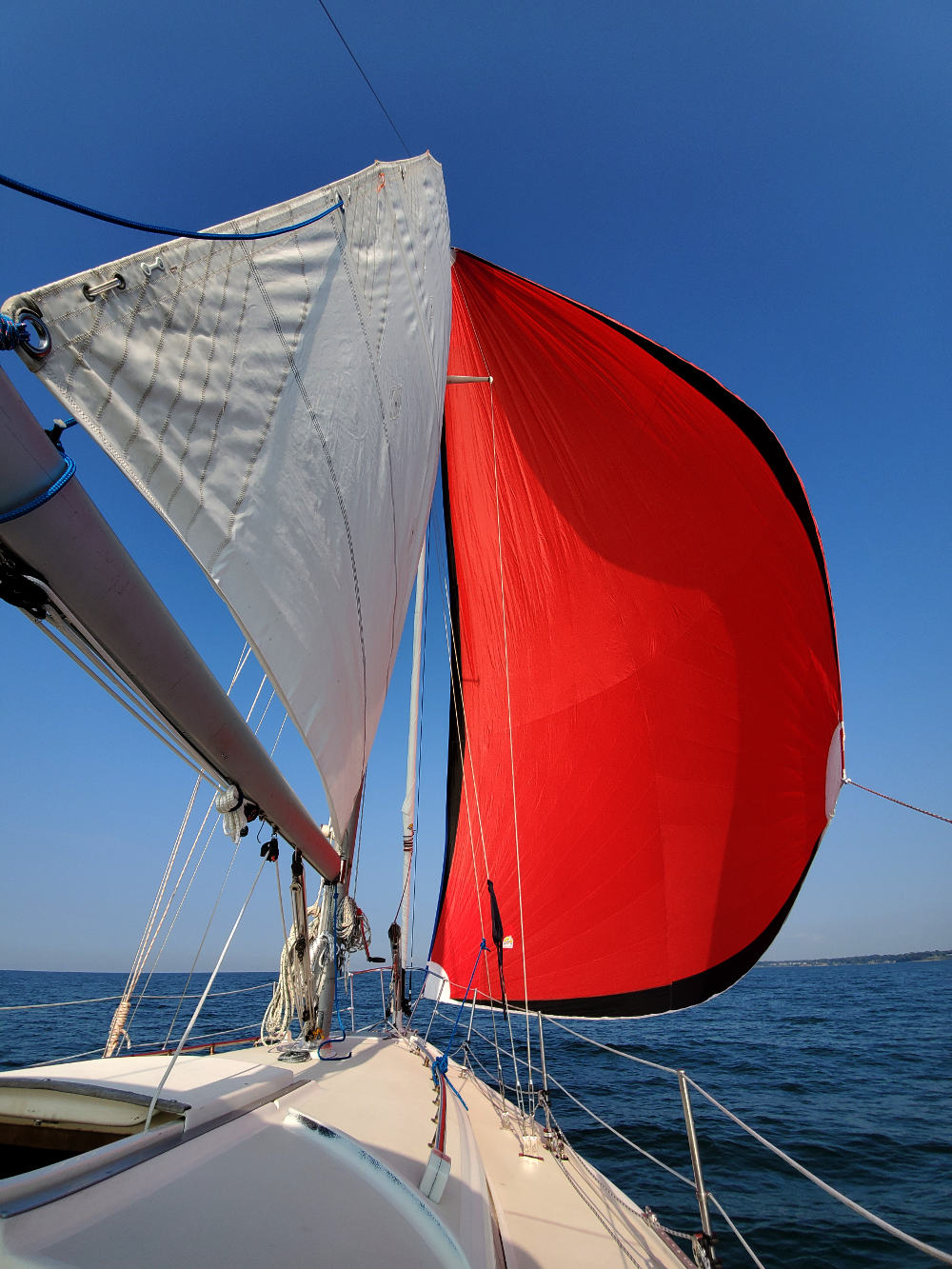 |
 |
 |

|
| More Photos... |
Setting the Asymmetric Spinnaker
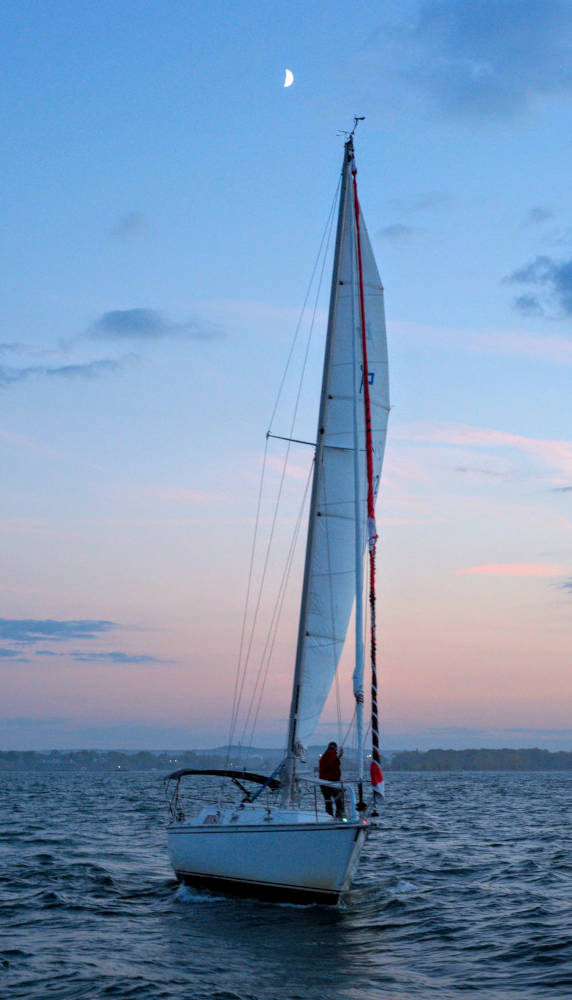 |
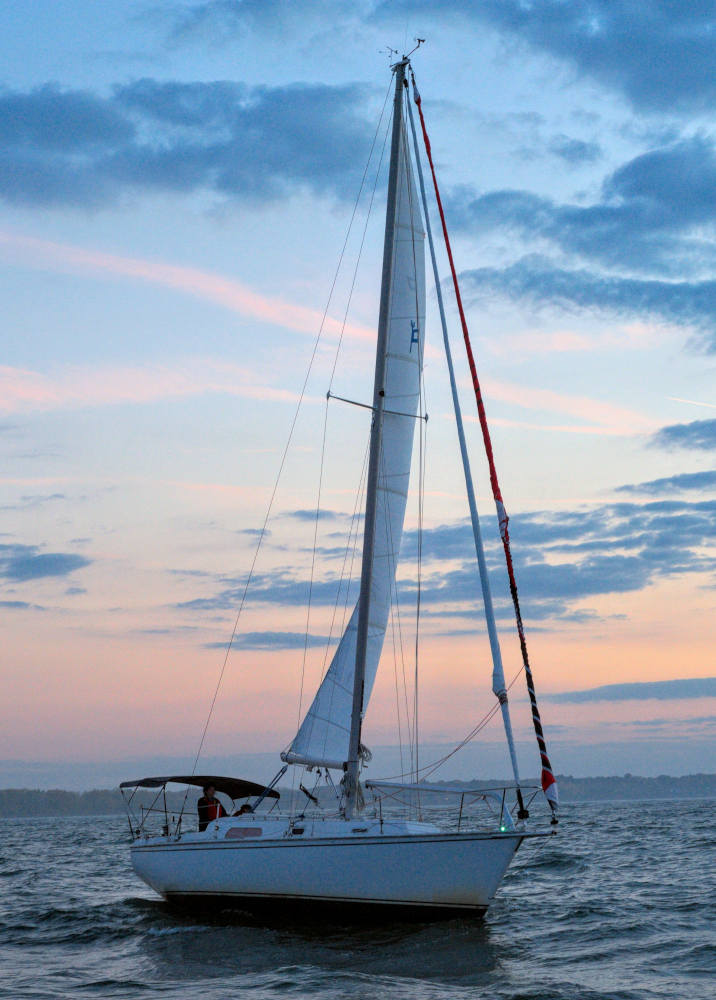 |
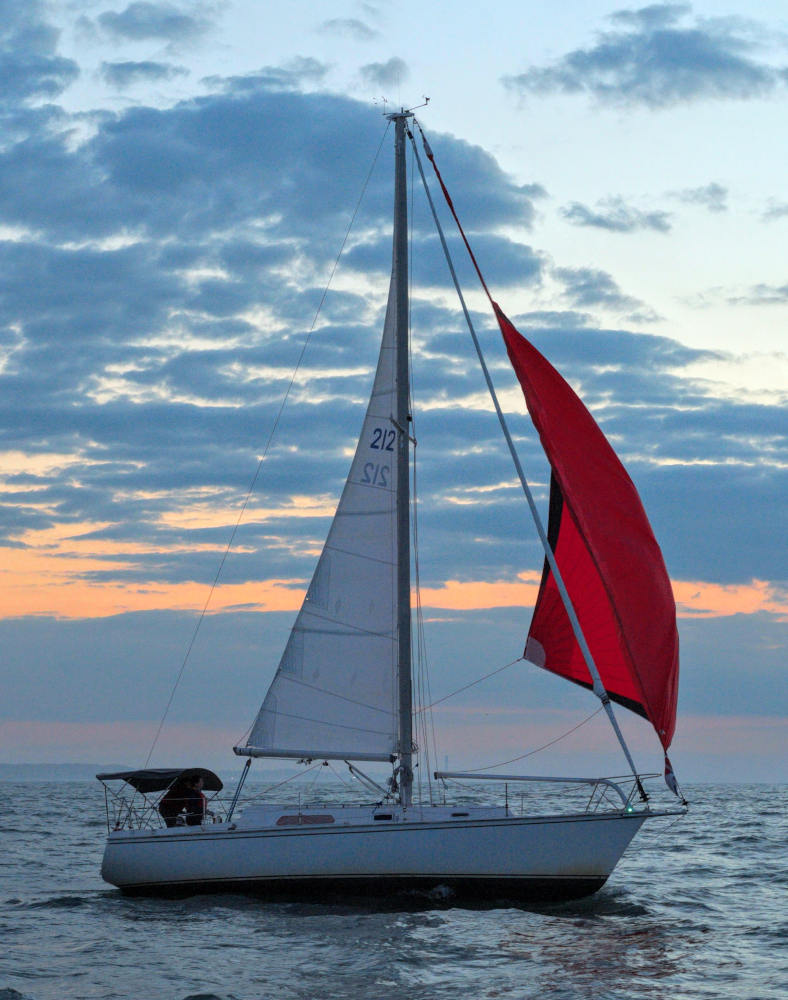 |
 |
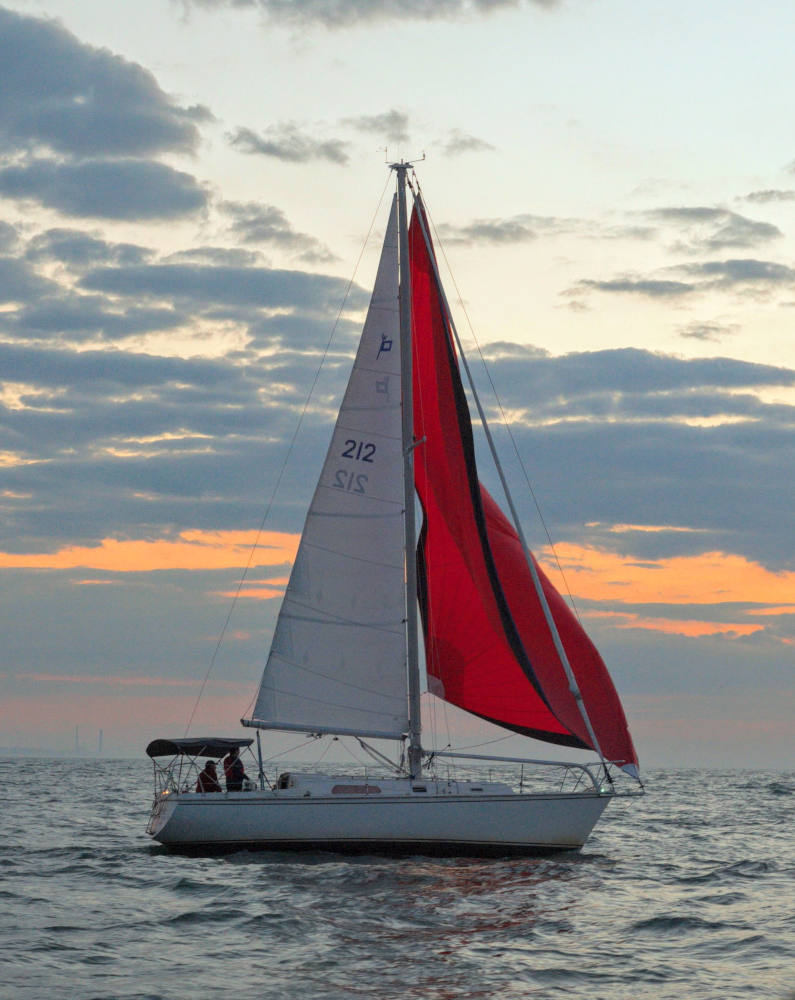 |
 |
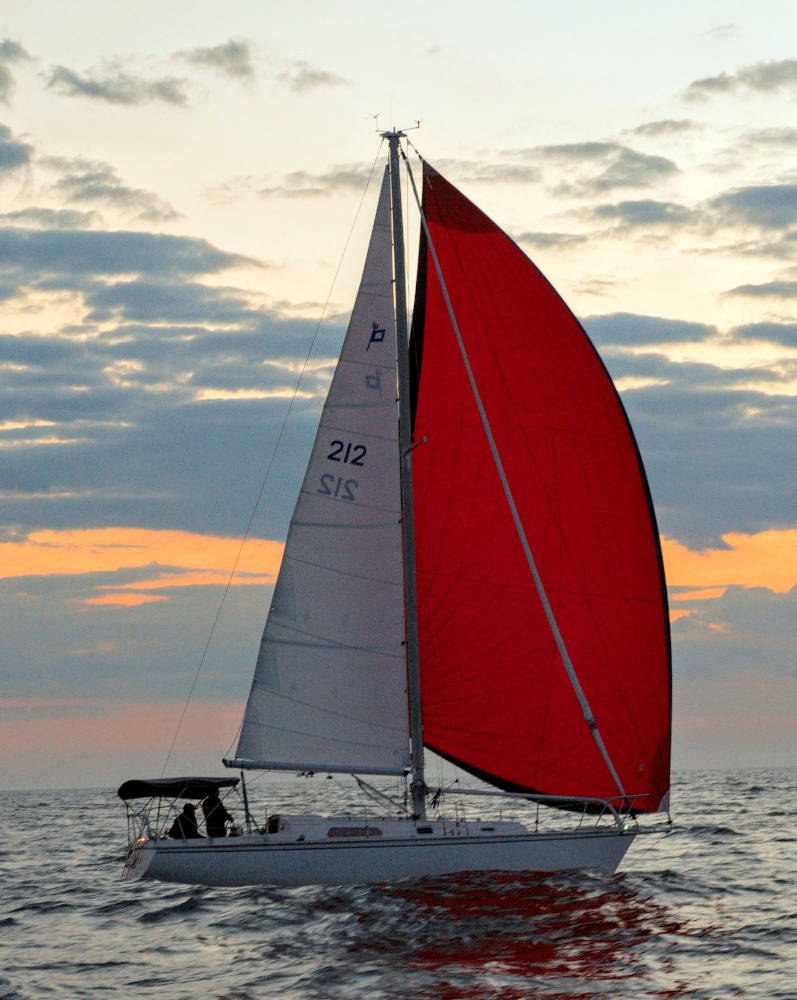 |
 |
 |
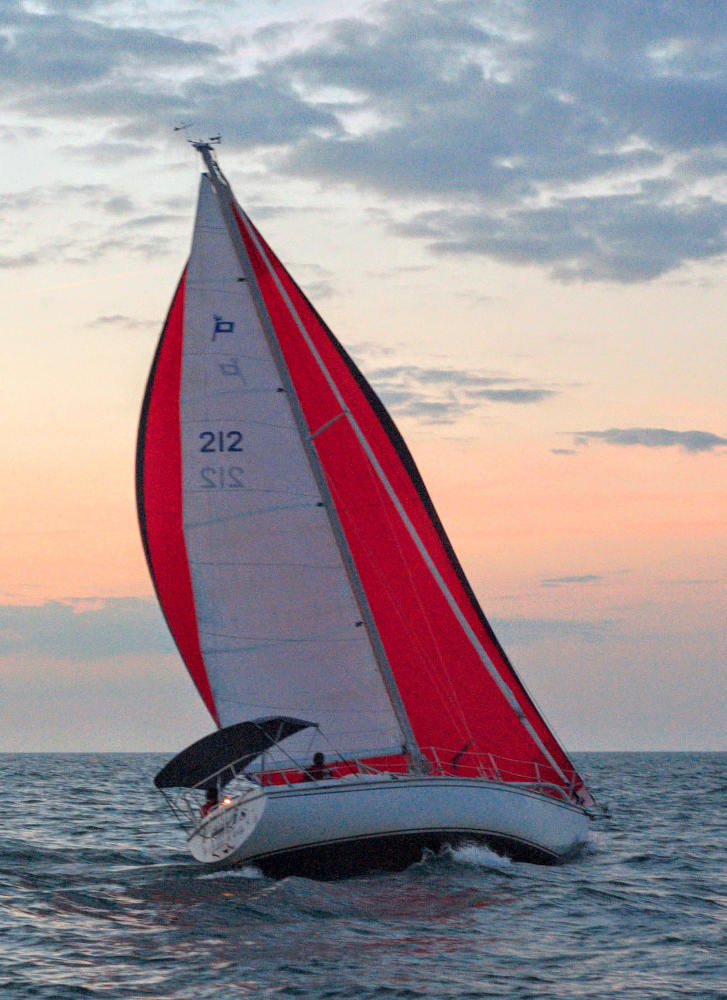 |
 |
 |
 |
|
Bowsprit I fabricated a bowsprit from 2" aluminum tubing. There are two tubes that are bent to fit the shape of the bow and extend out about 2 feet in front of the stem. There is a welded plate at the end with a large U-bolt to anchor the base of the furling unit. The bowsprit is through-bolted to the hull in three places with 10mm bolts on each side just below the rub rail. It is bolted from the inside to some SS bars with SS nuts welded to them so that there are no exposed bolt heads for things to snag on. The bowsprit as built with all it's fasteners is about 11 lbs. It is also designed to accommodate the anchor. The vertical loads on the bowsprit are managed by a bobstay made from 7mm dynema that is secured to the hull at the bottom with a loop through a spliced eye. It is looped through a lateral hole I put in the bow about a foot above the waterline. The hole is a fiberglass tube that is glassed in place with epoxy and sealed from the inside of the boat. At the end of the bowsprit there is a turnbuckle to tension the bobstay. |
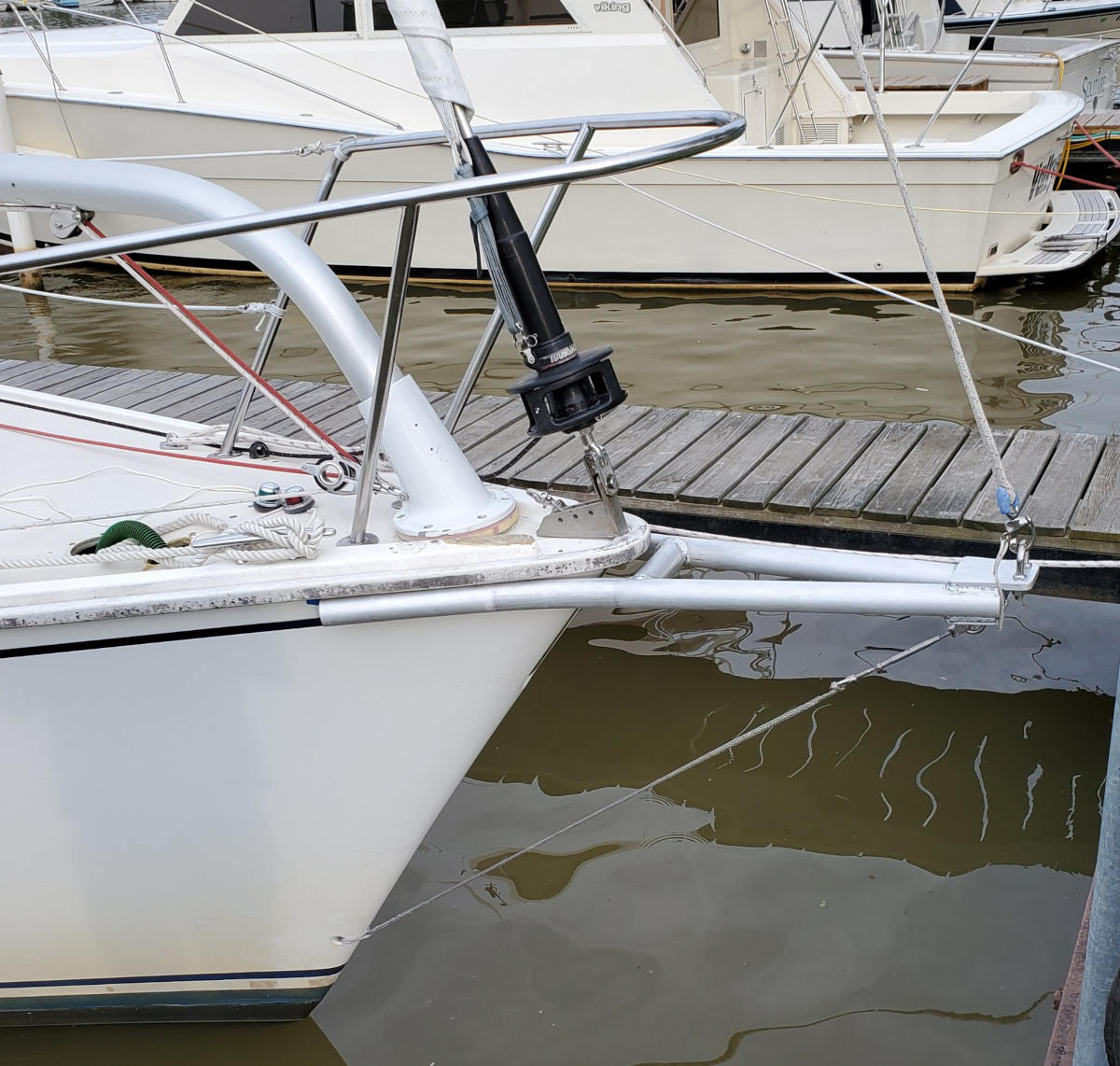 |
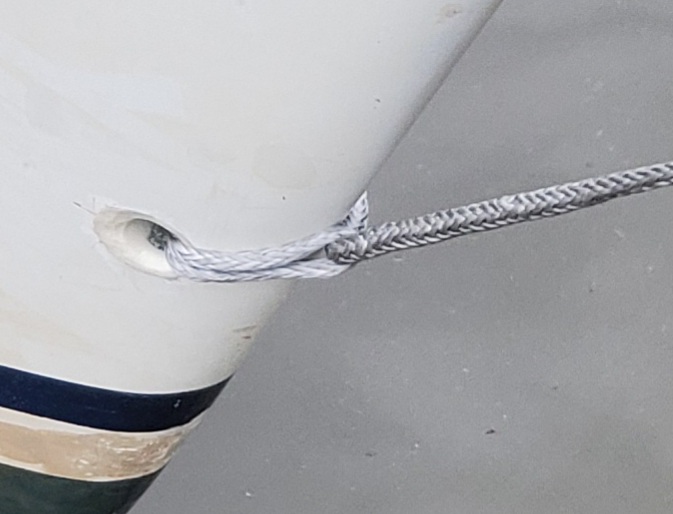 |
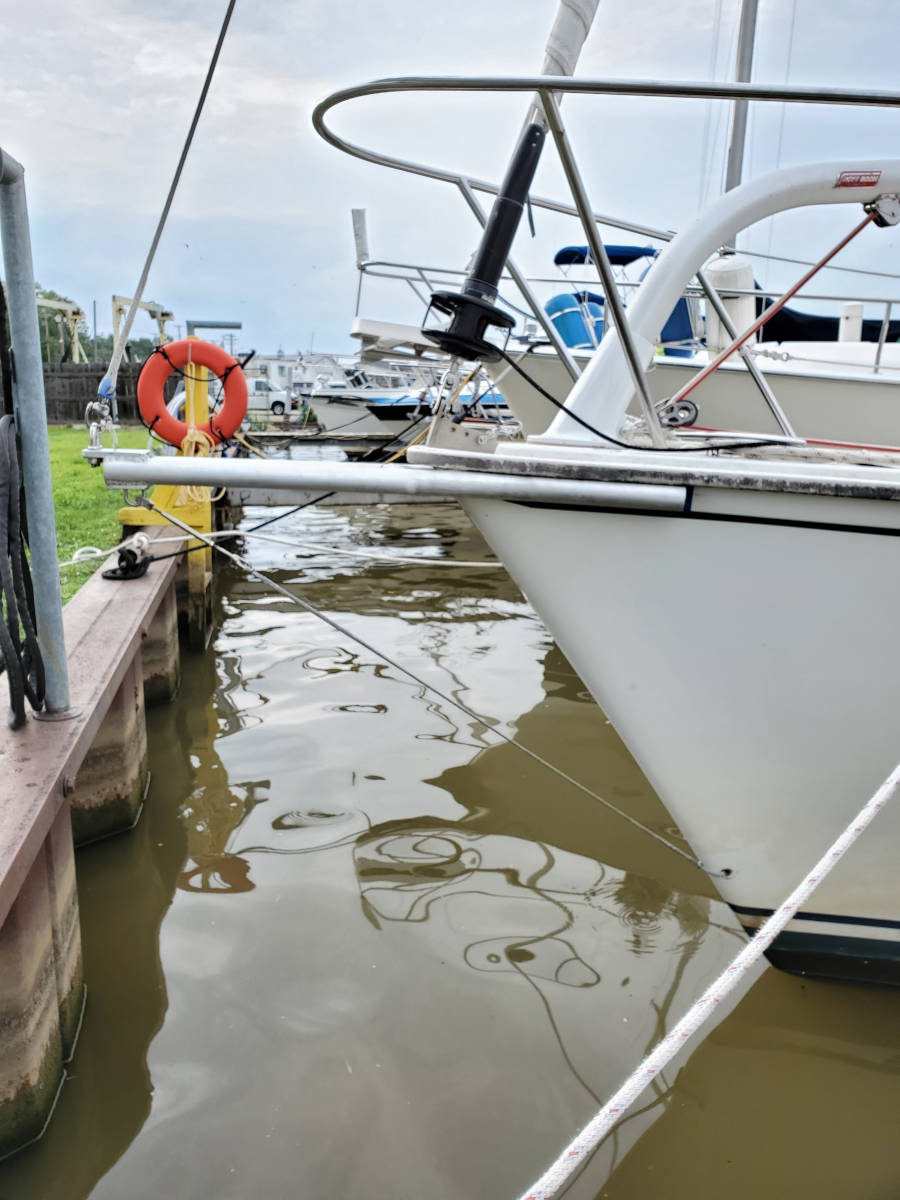 |

|
|
Masthead Crane The masthead crane extends the spinnaker halyard block out 6" from the headstay. That's about double what the OEM setup had. It is made from two aluminum plates welded together in an upside-down T shape. The base sits flat on the masthead. To fit it I cut off the OEM spinnaker cranes and cut a few slots in the mast top flange to get it all to fit together. The crane extends out the aft end and has a spot to attach the backstay. There are a couple straps that connect the crane to the headstay. All that is to get the loads from the stays (and the spinnaker when its flying) balanced in the crane. There's some interesting geometry going on here that I'll discuss below. Overall I added about 4 lbs to the masthead with this mod. All of the masthead bits (windex, lights, wind instruments) are now attached to the crane. |
 |
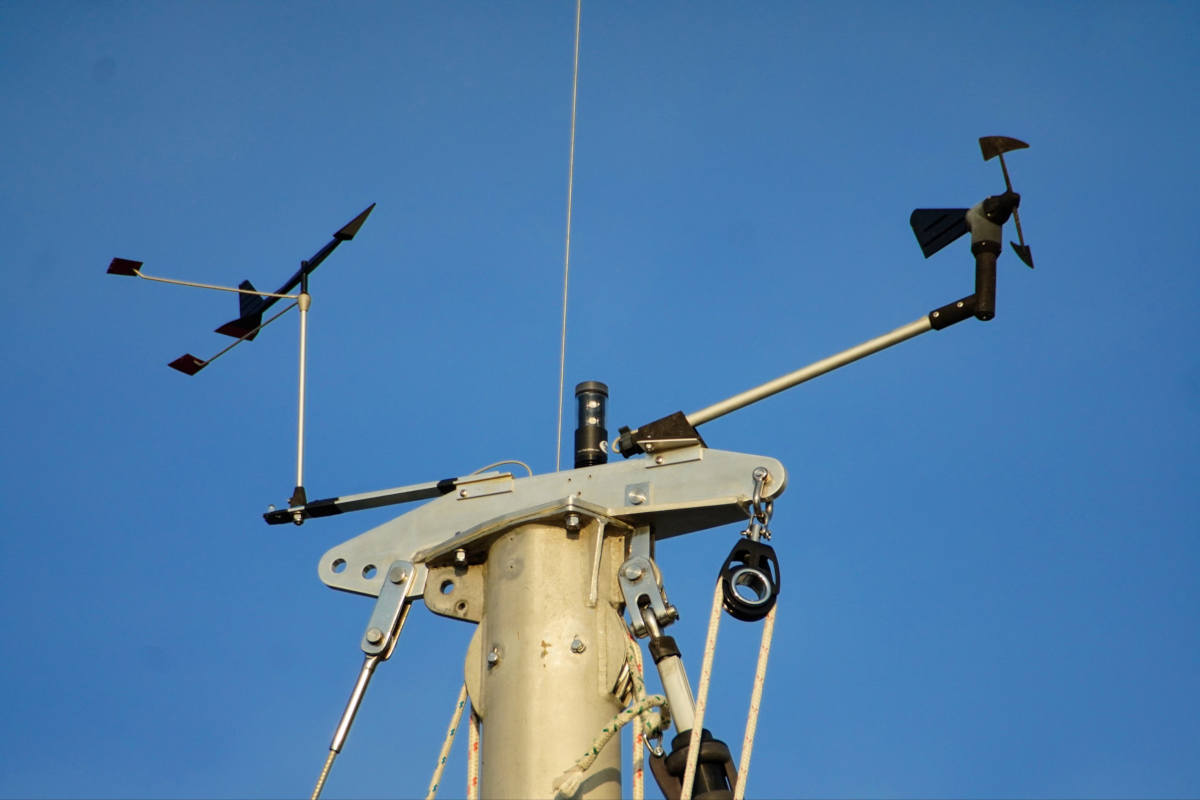
|
|
Furling System I chose a Selden CX15 furler for the asymmetric spinnaker. This unit has an interchangable torsion line that lets you add additional sails by adding only the torsion line. The drum and top swivel can be swapped to the additional sail torsion lines. On my installation we had some trouble getting the torsion line to start furling the sail from the top so we added a swivel at the bottom from the Seldon GX unit. The torsion line rotates with the drum and the tack of the sail is attached to the swivel which rotates freely over the torsion line. The furling line is a continuous loop that runs back to the cocpit on the startbord side of the boat. Selden makes fairleads that mount to the stancions and keep the line organized. They open for loading the line so there is no need to thread it through. I added a fairlead loop on the bowsprit to get the line running at a better angle where it goes around the drum. |


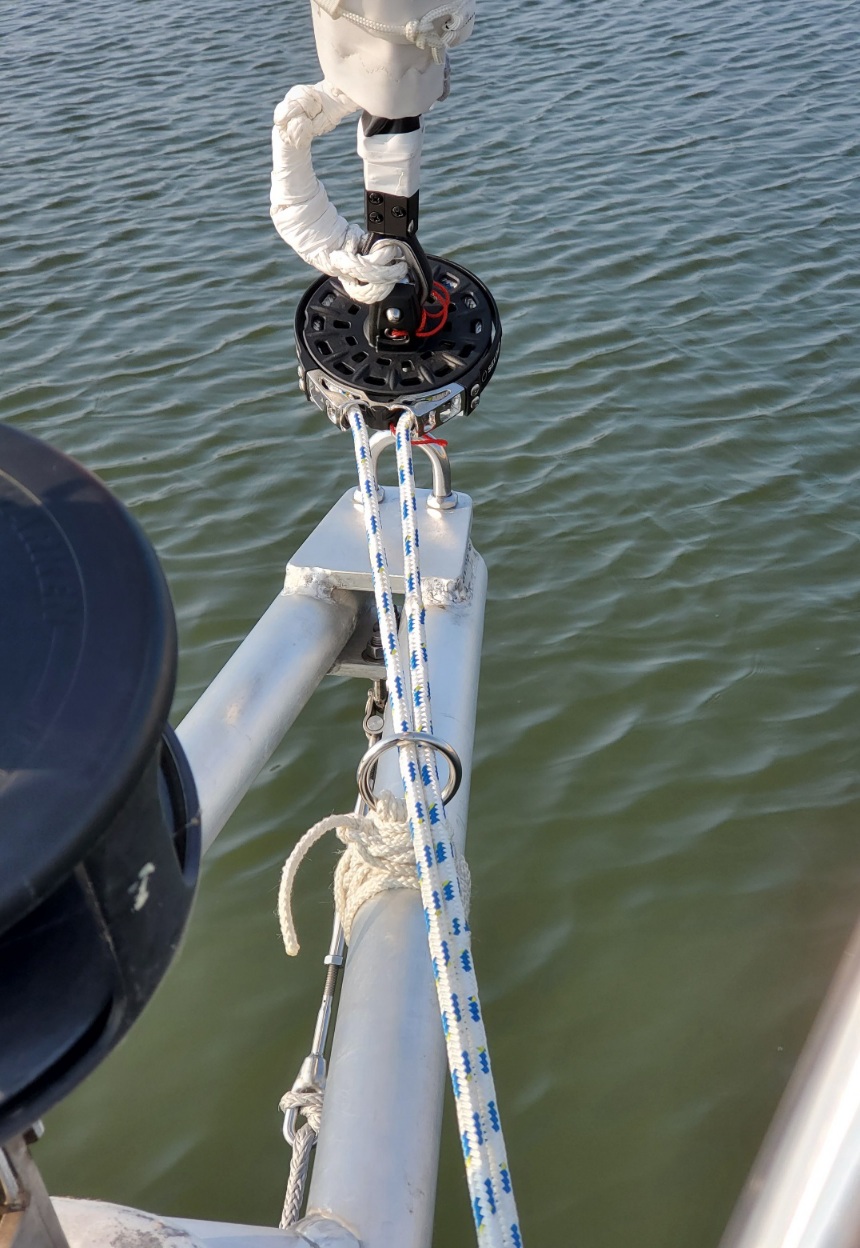

|


